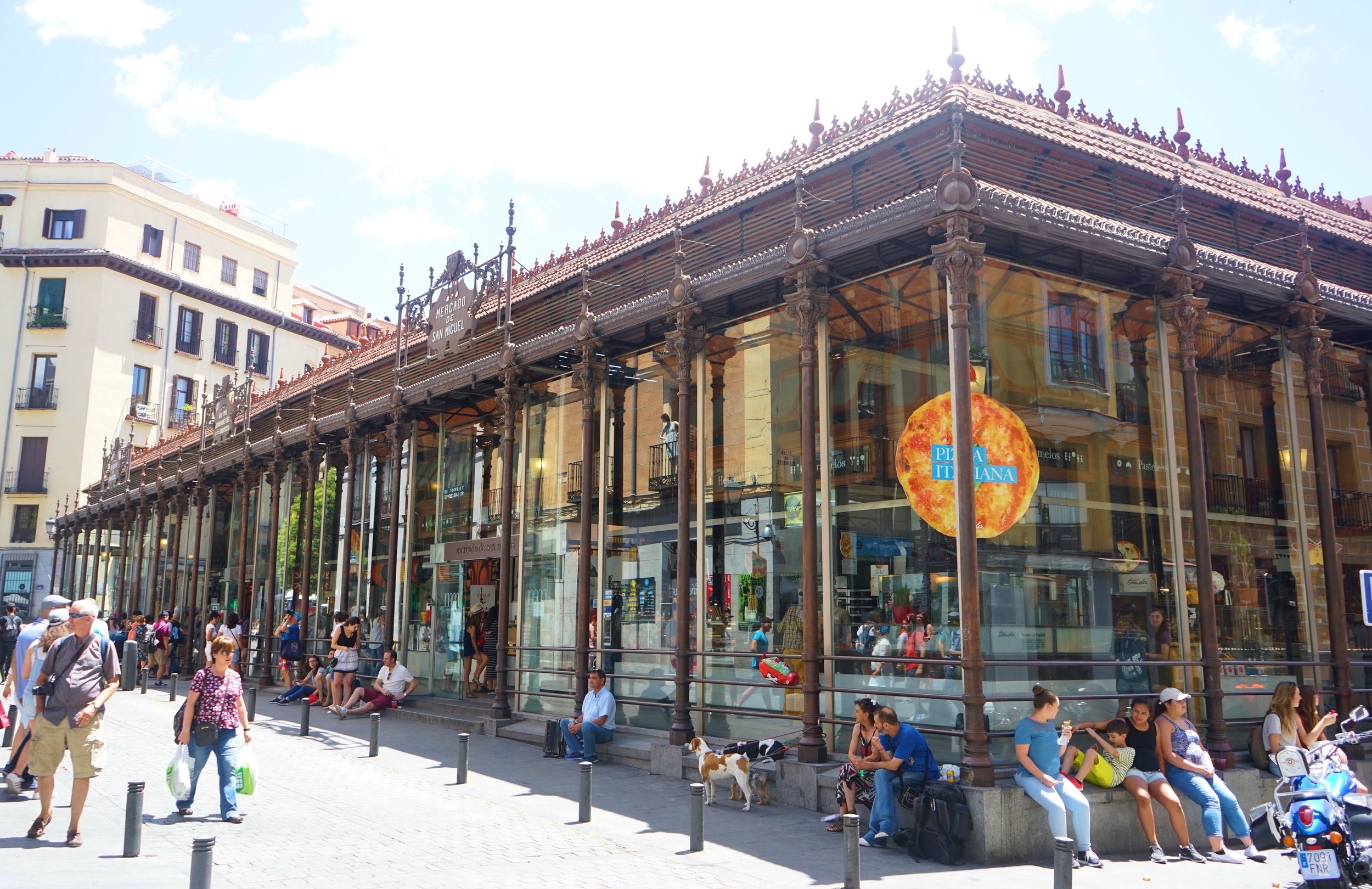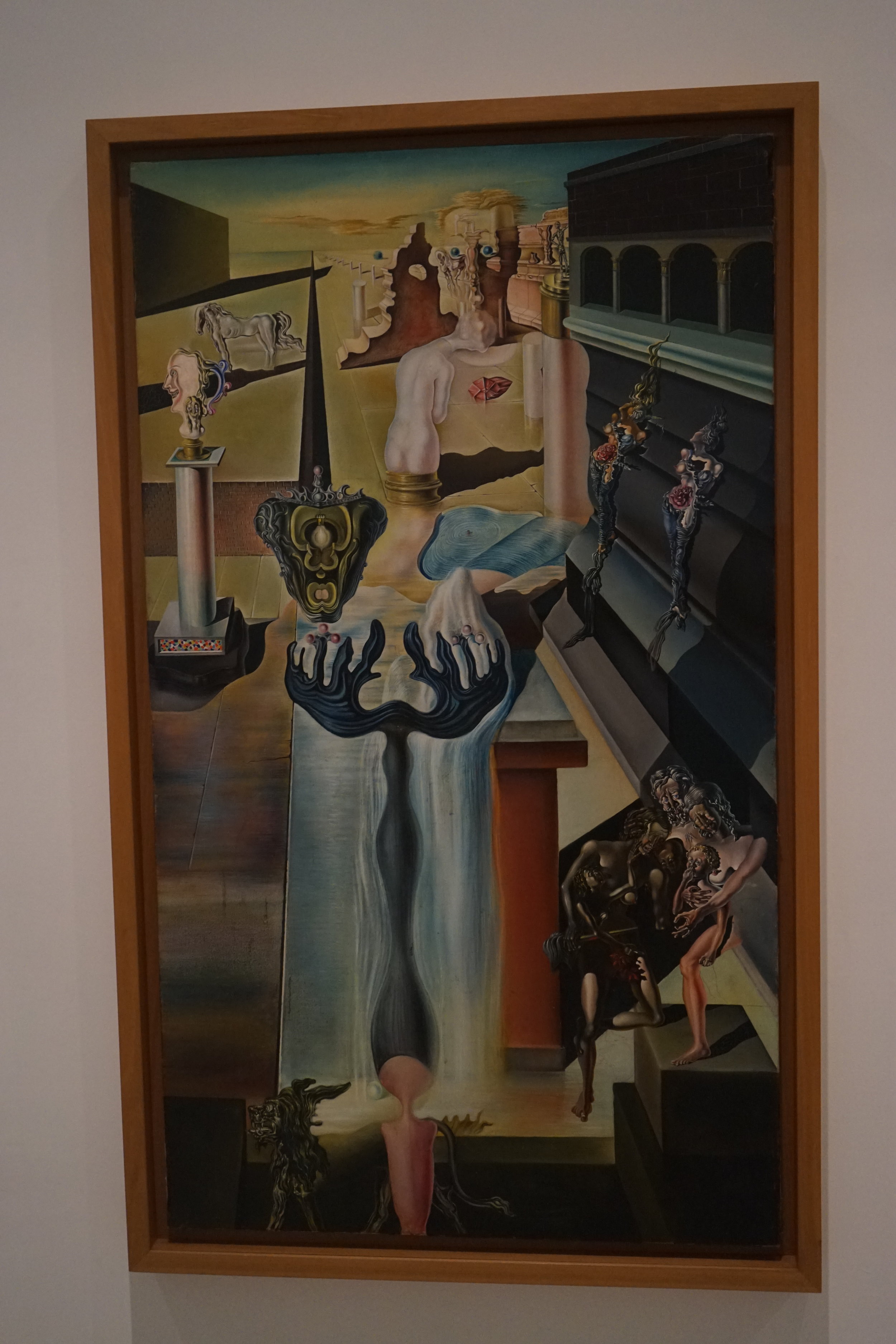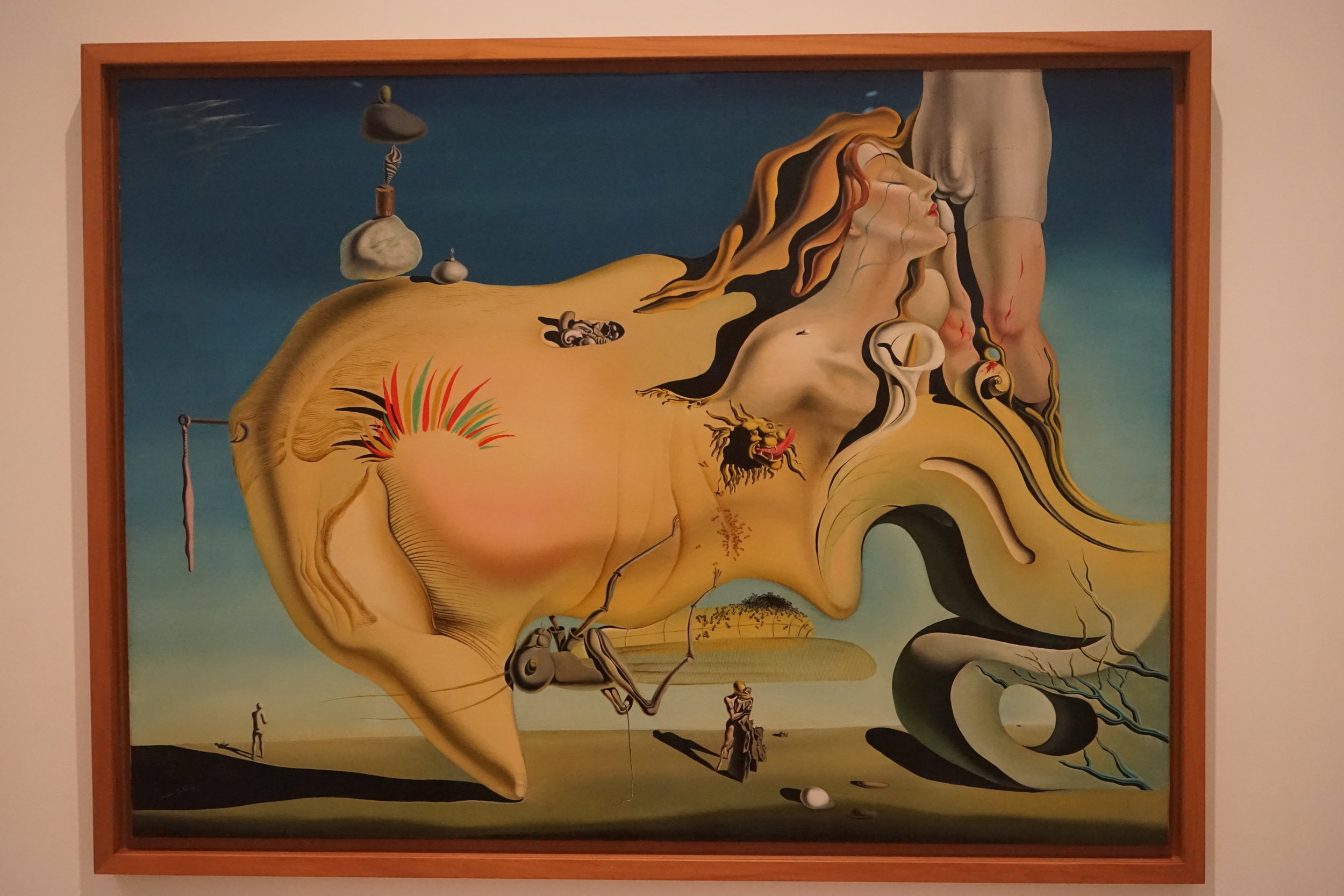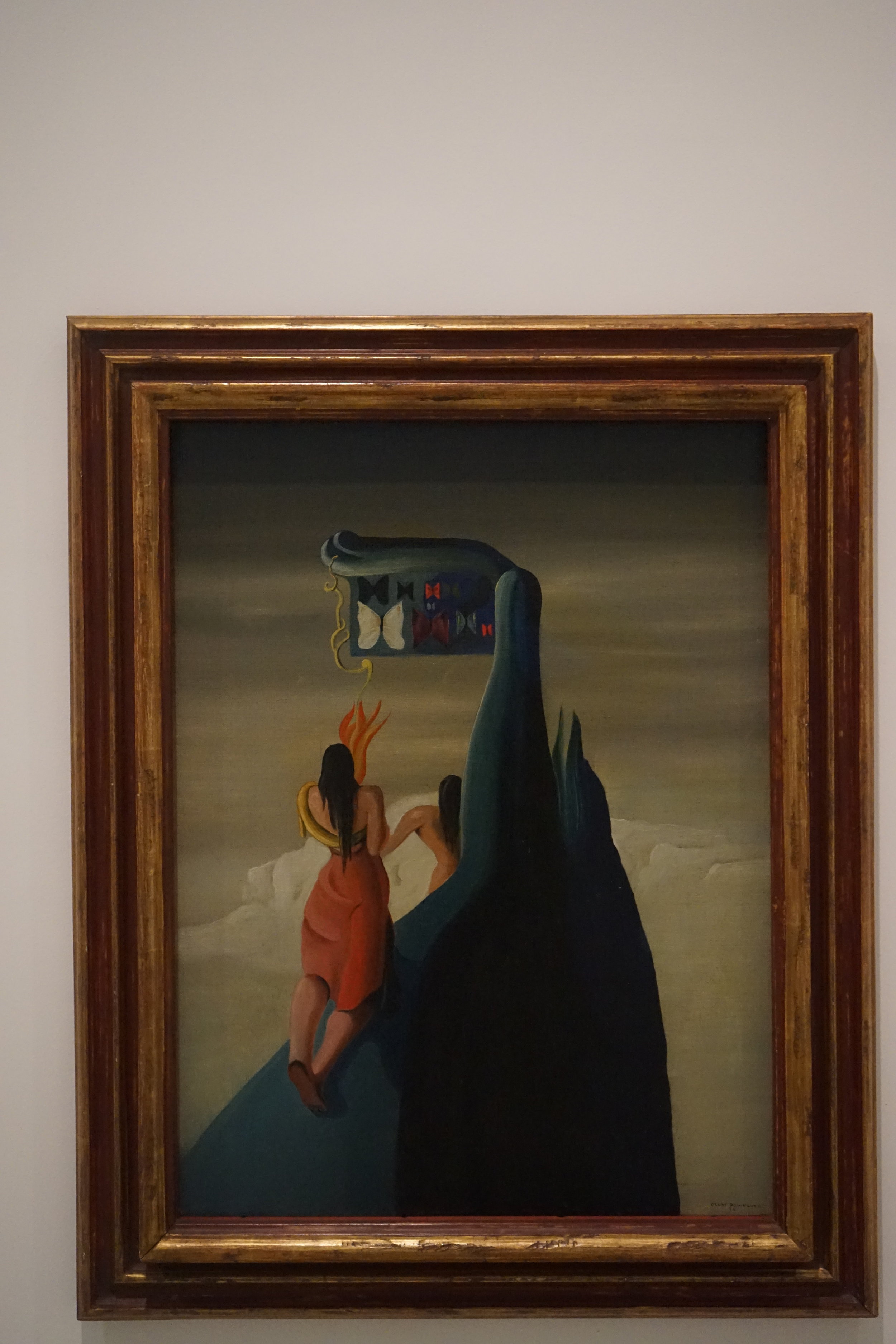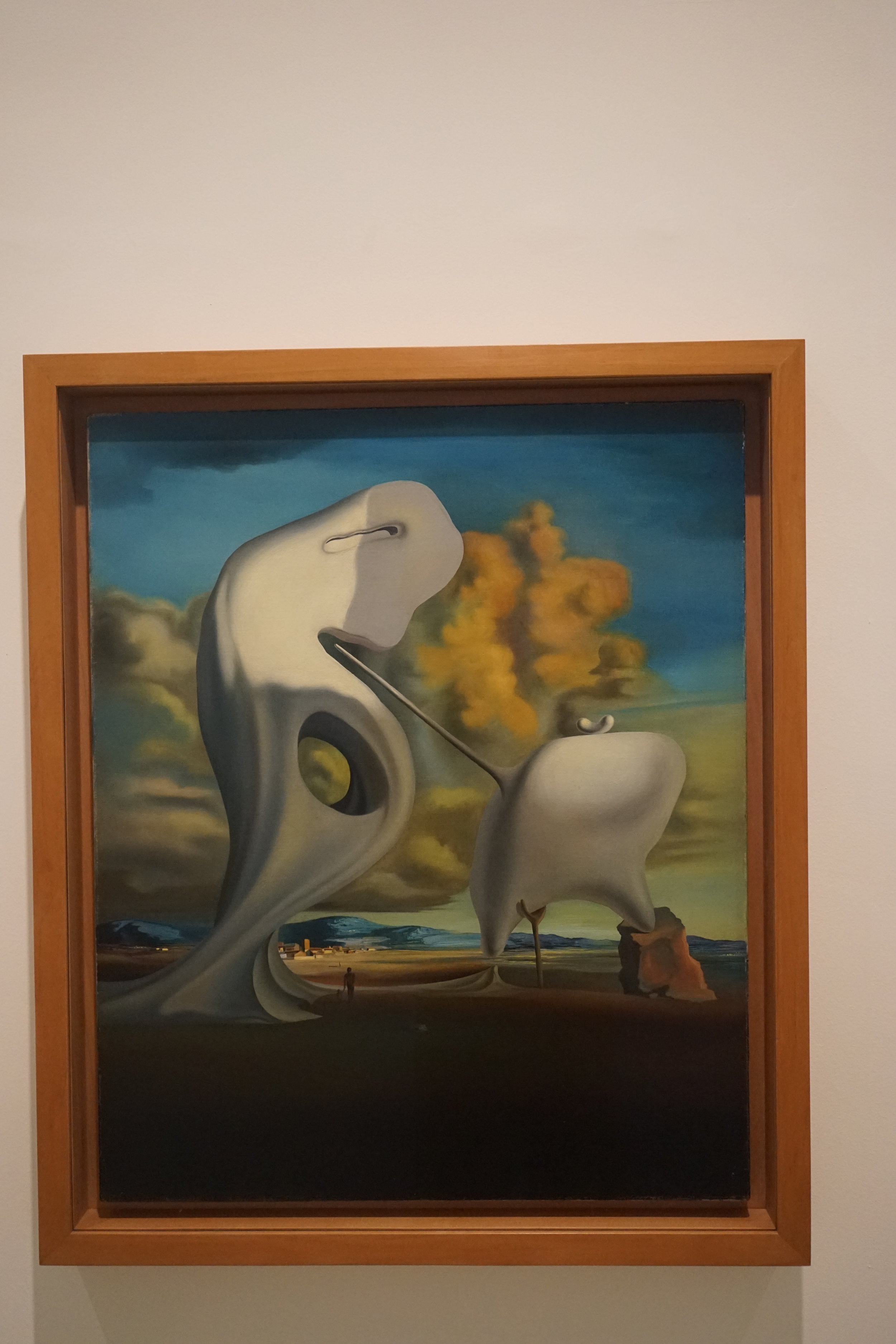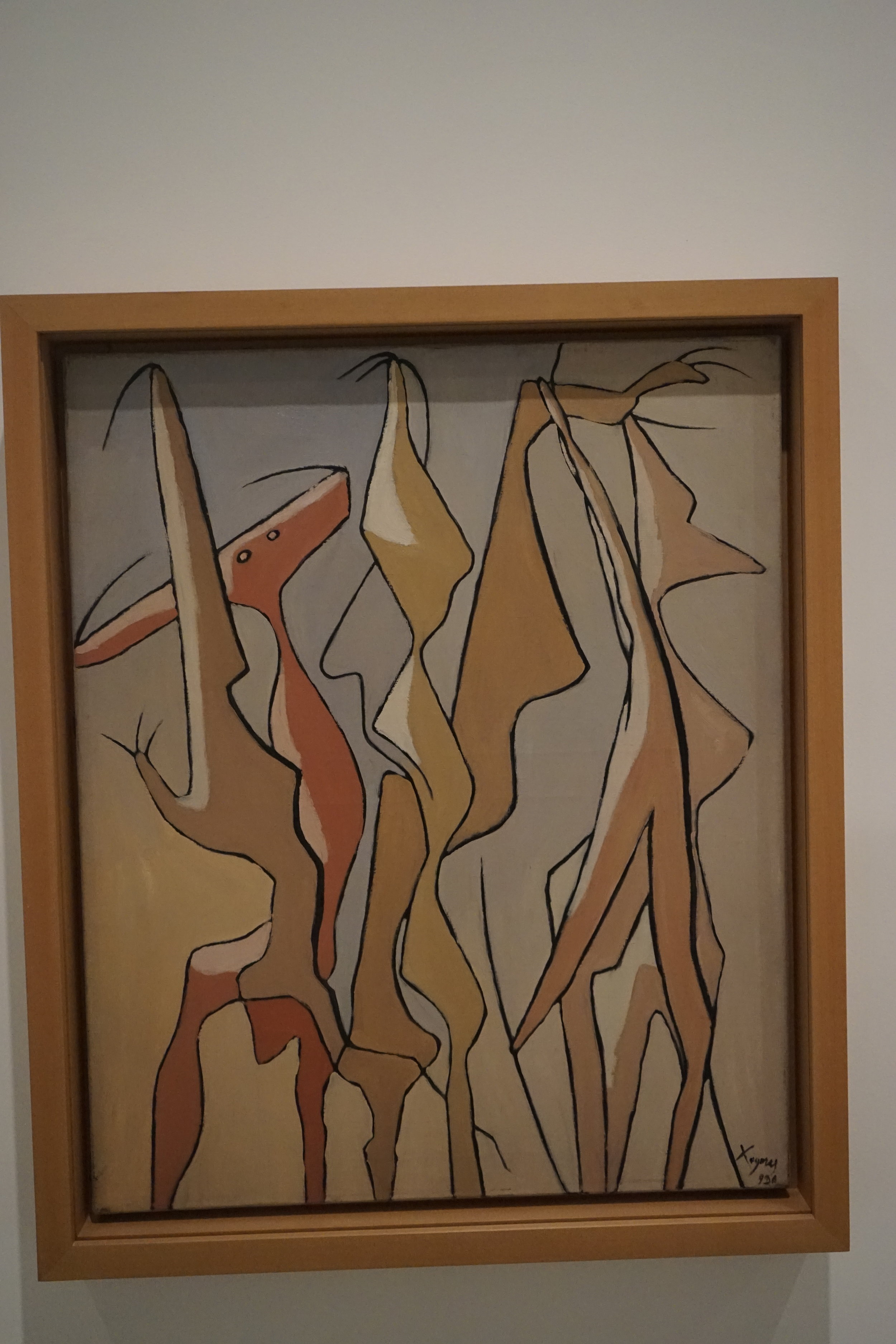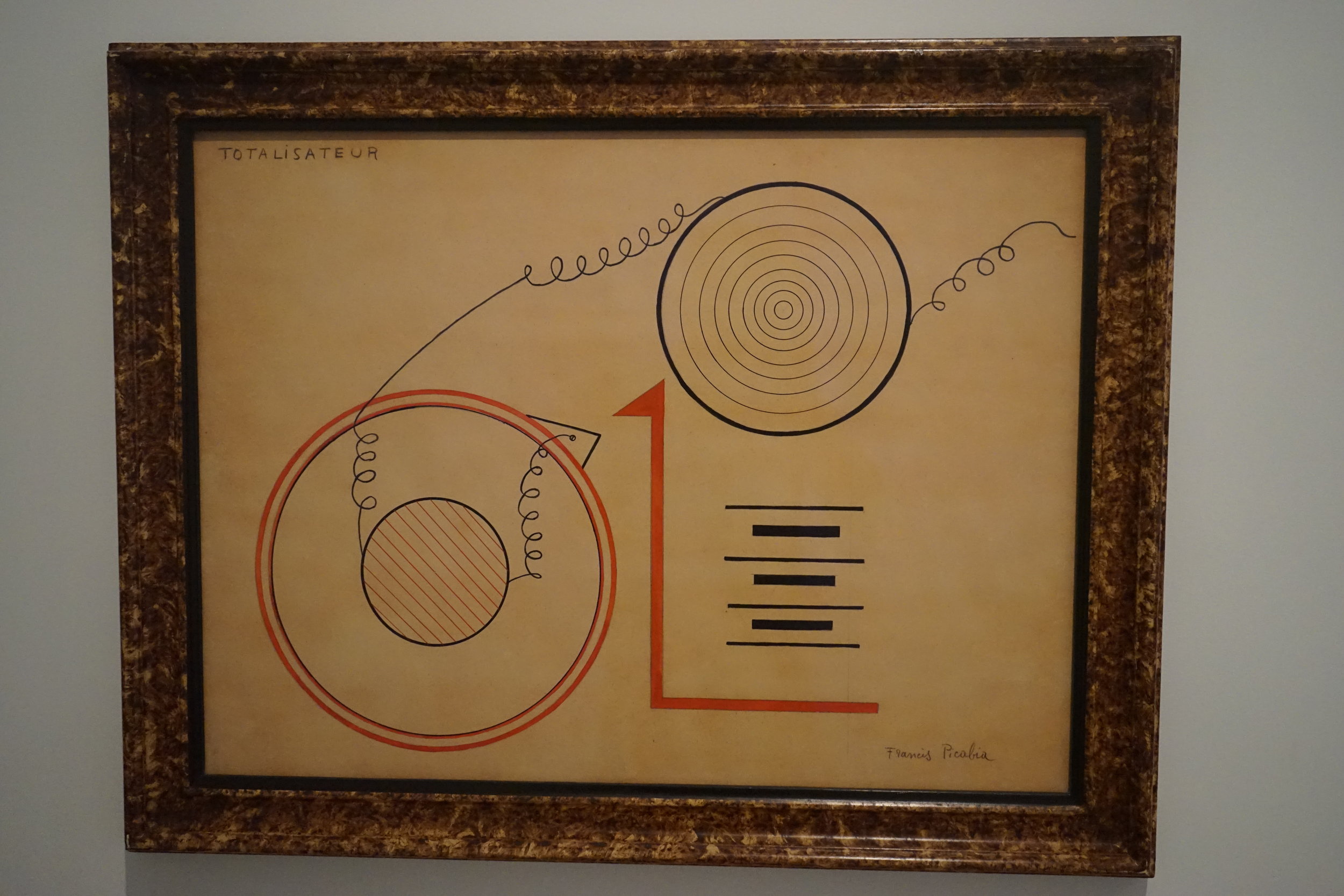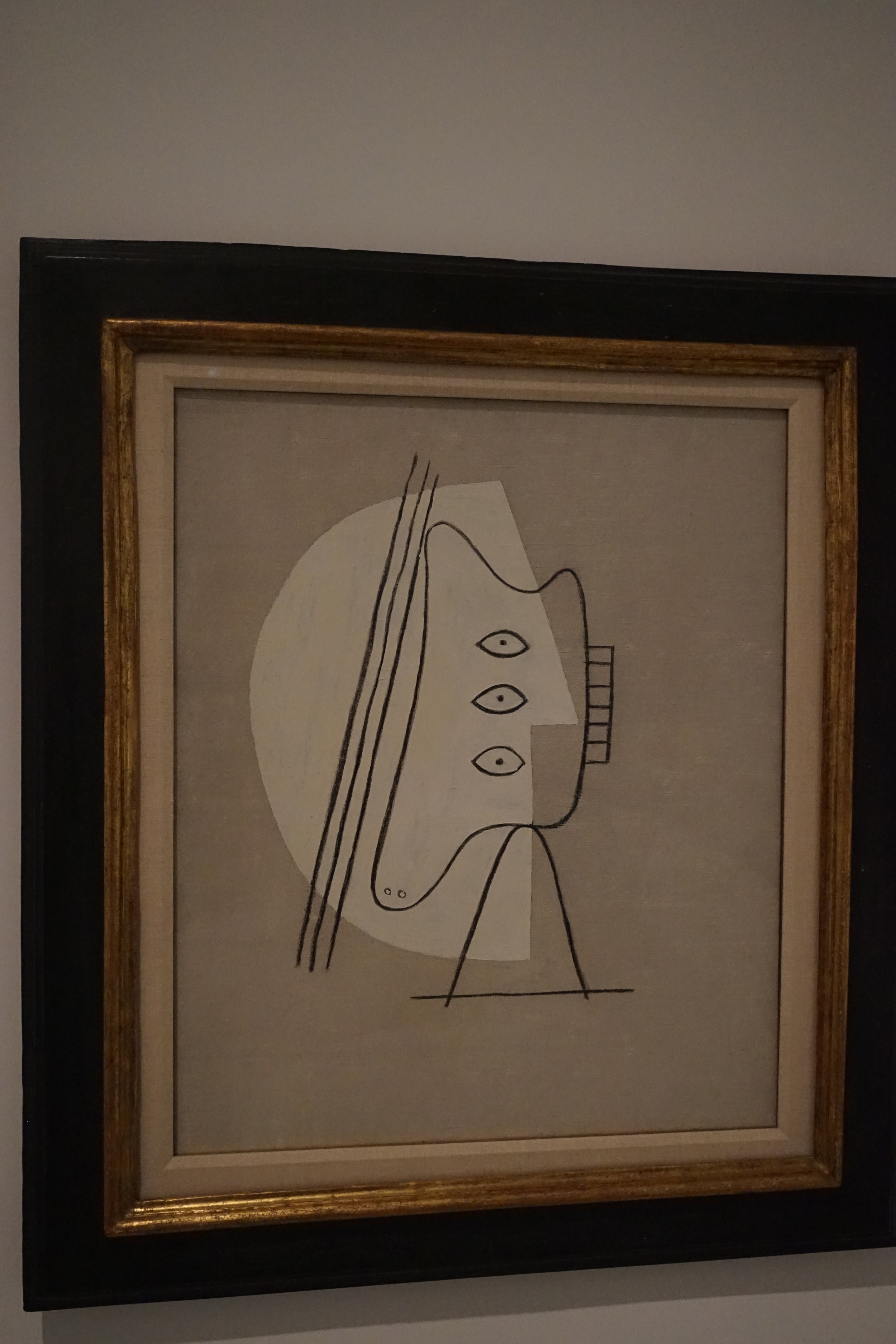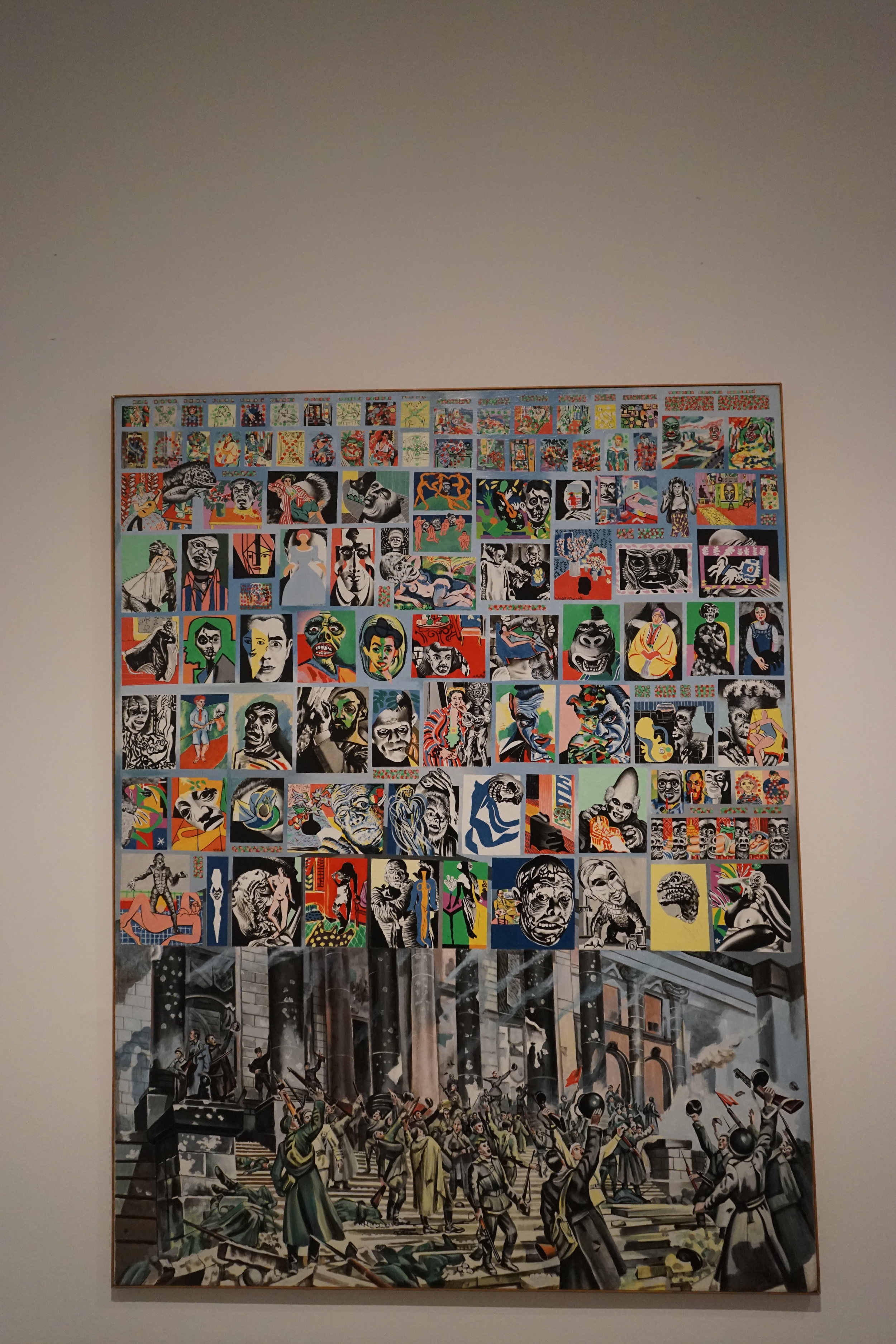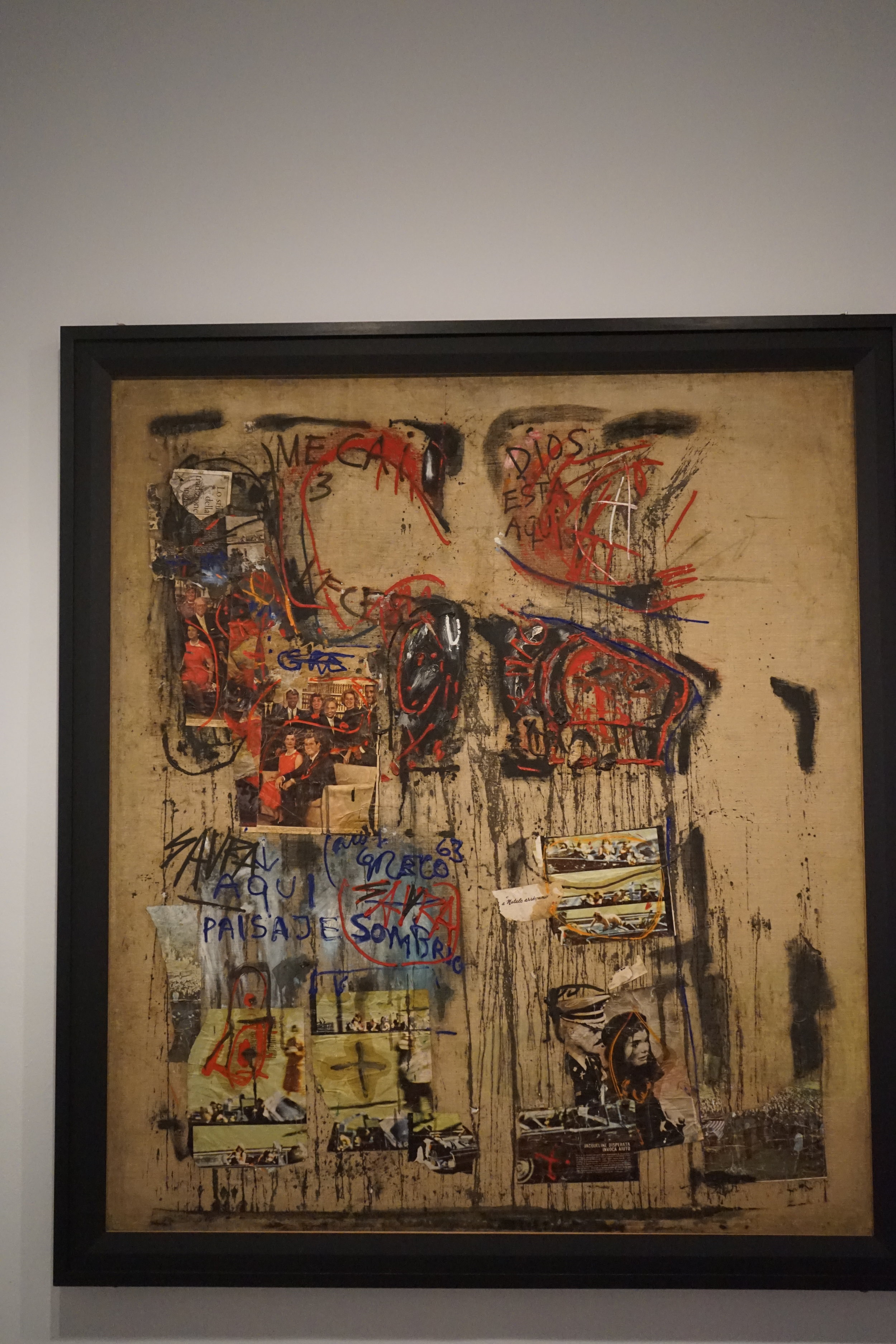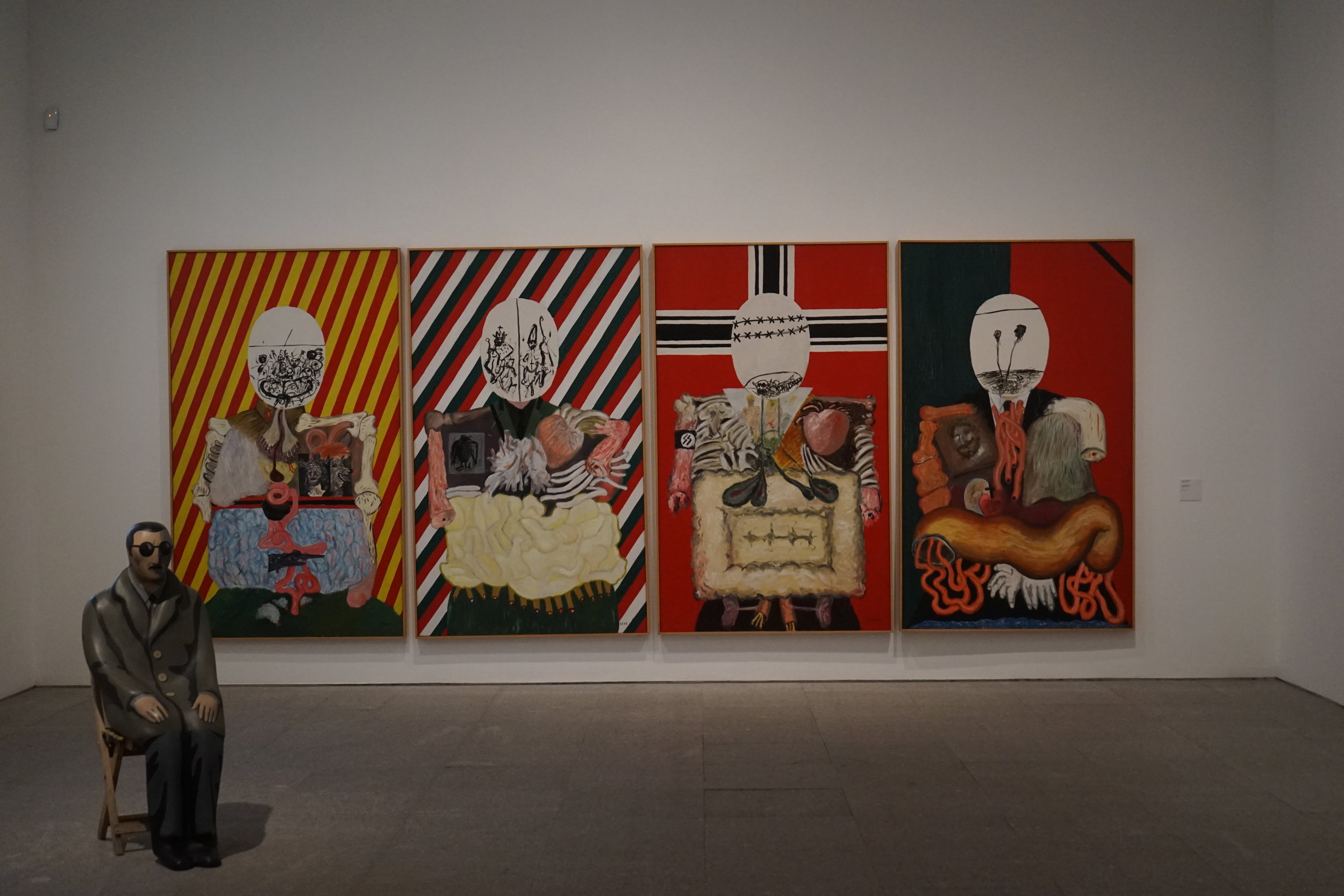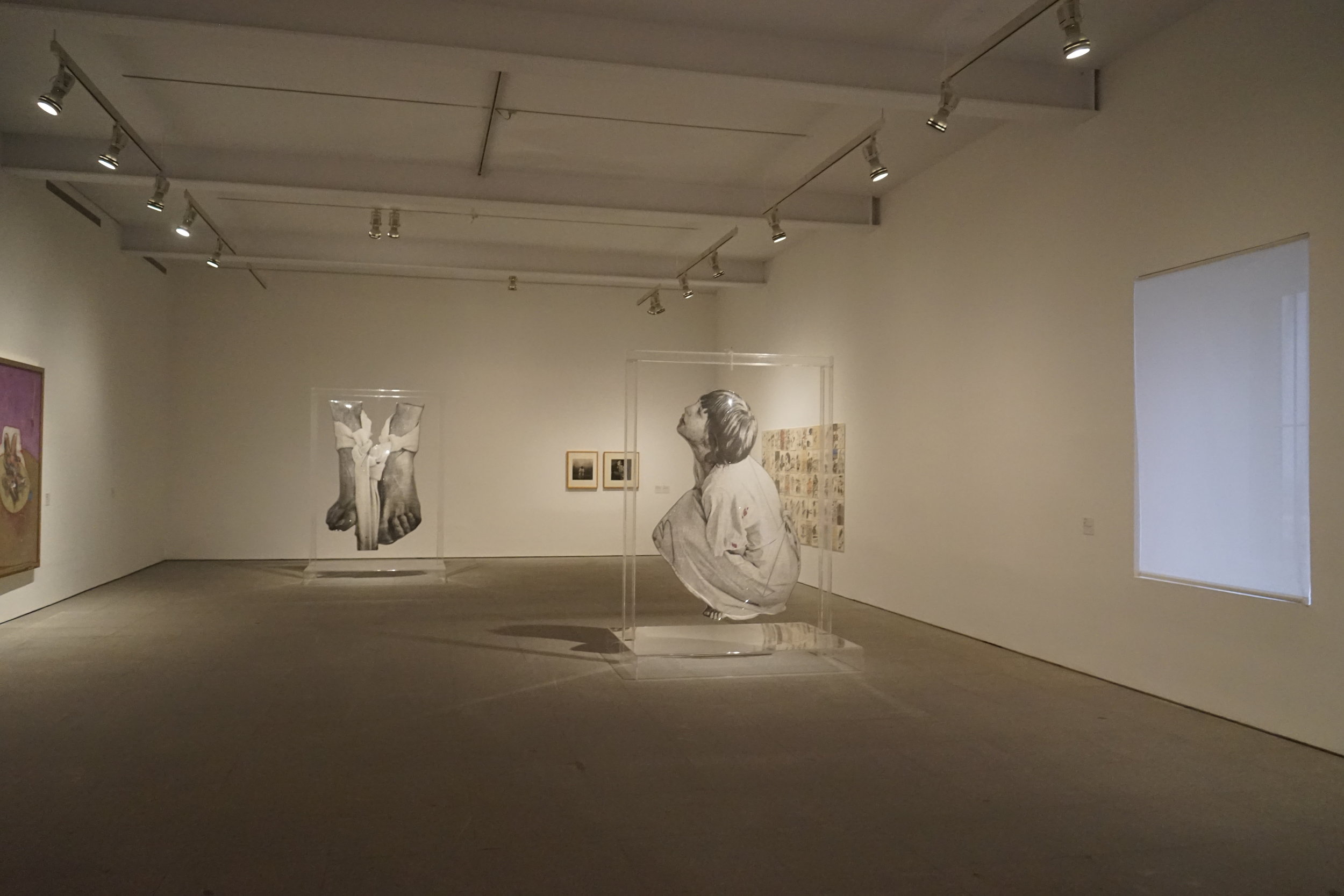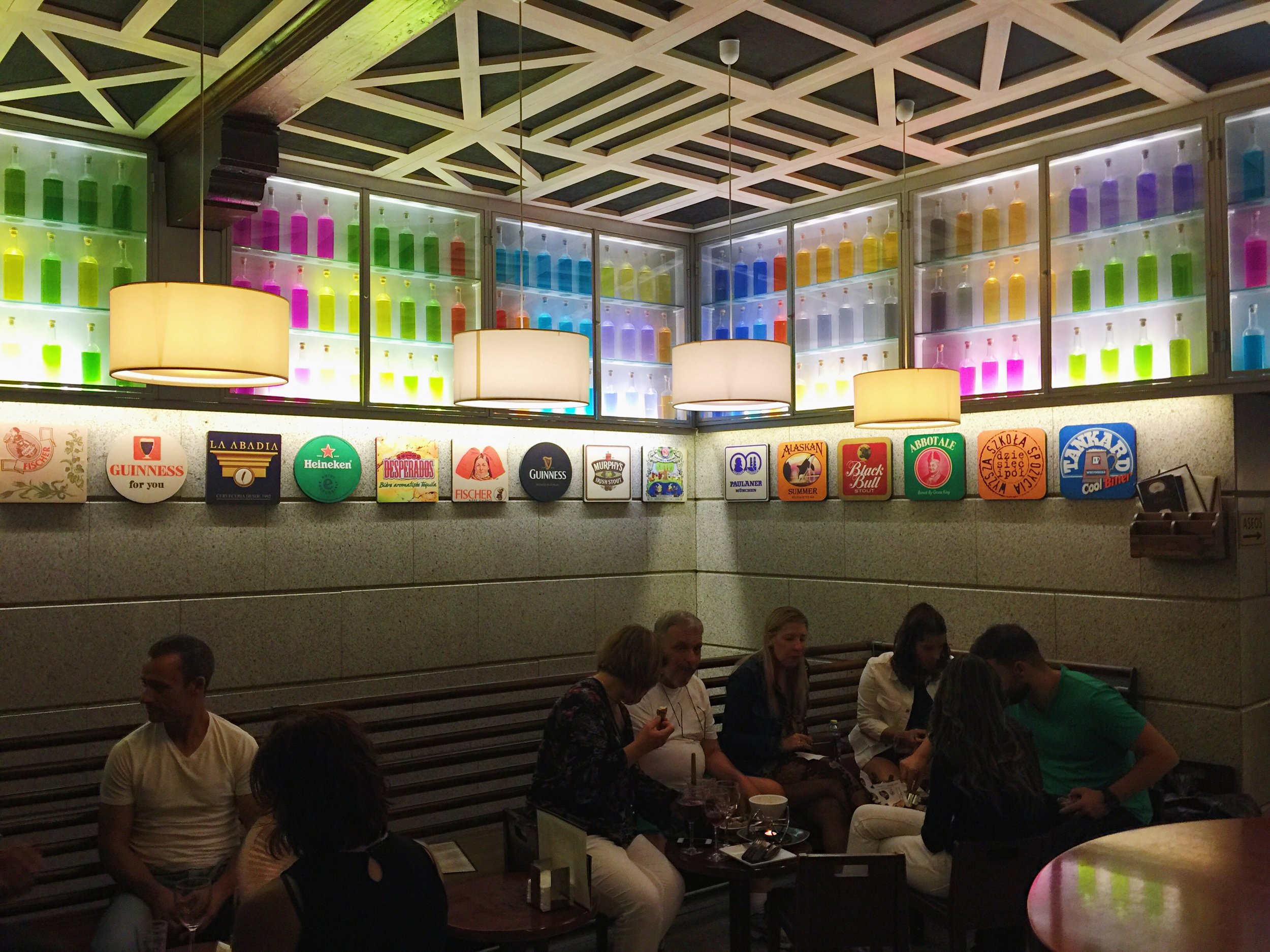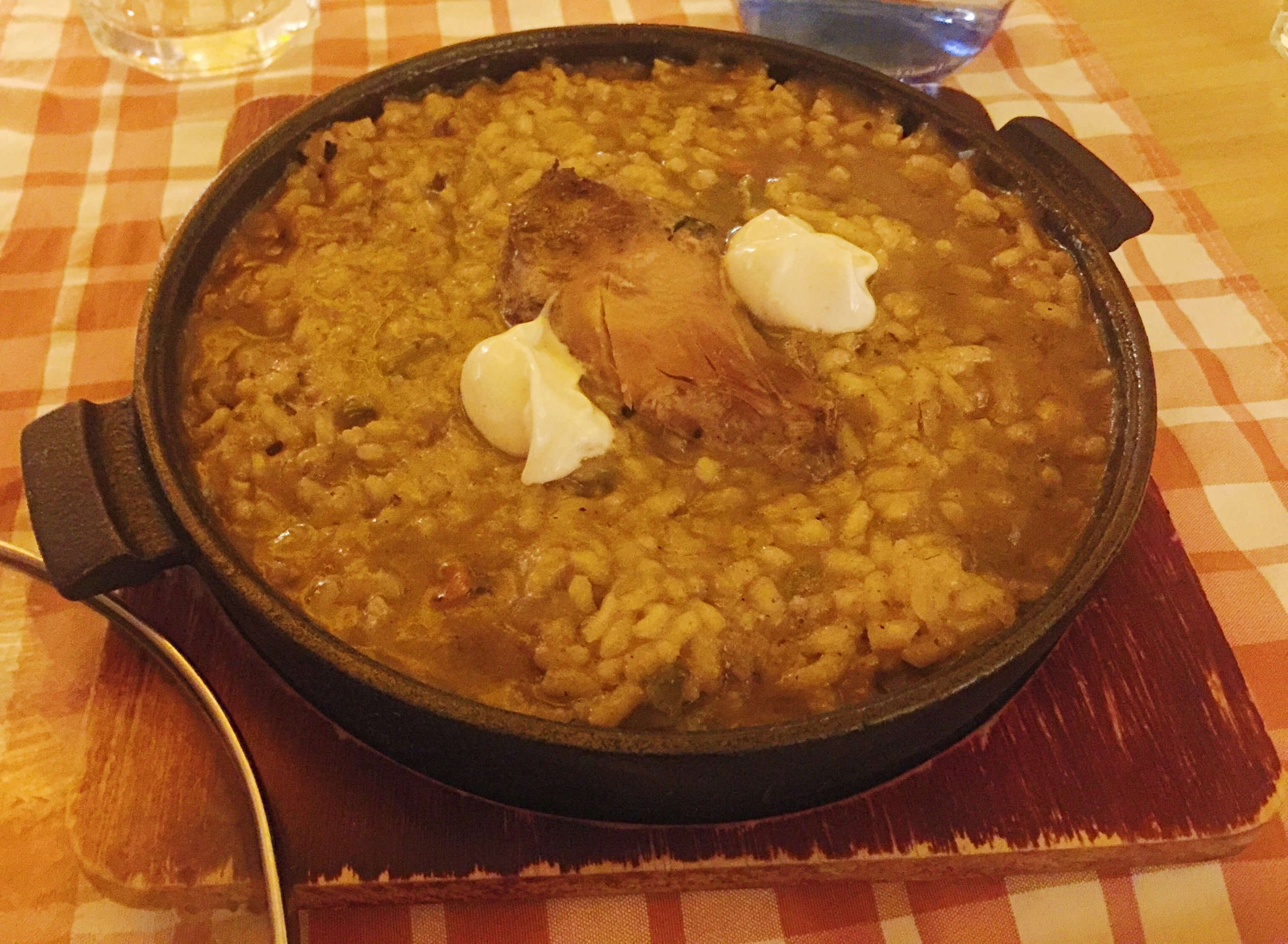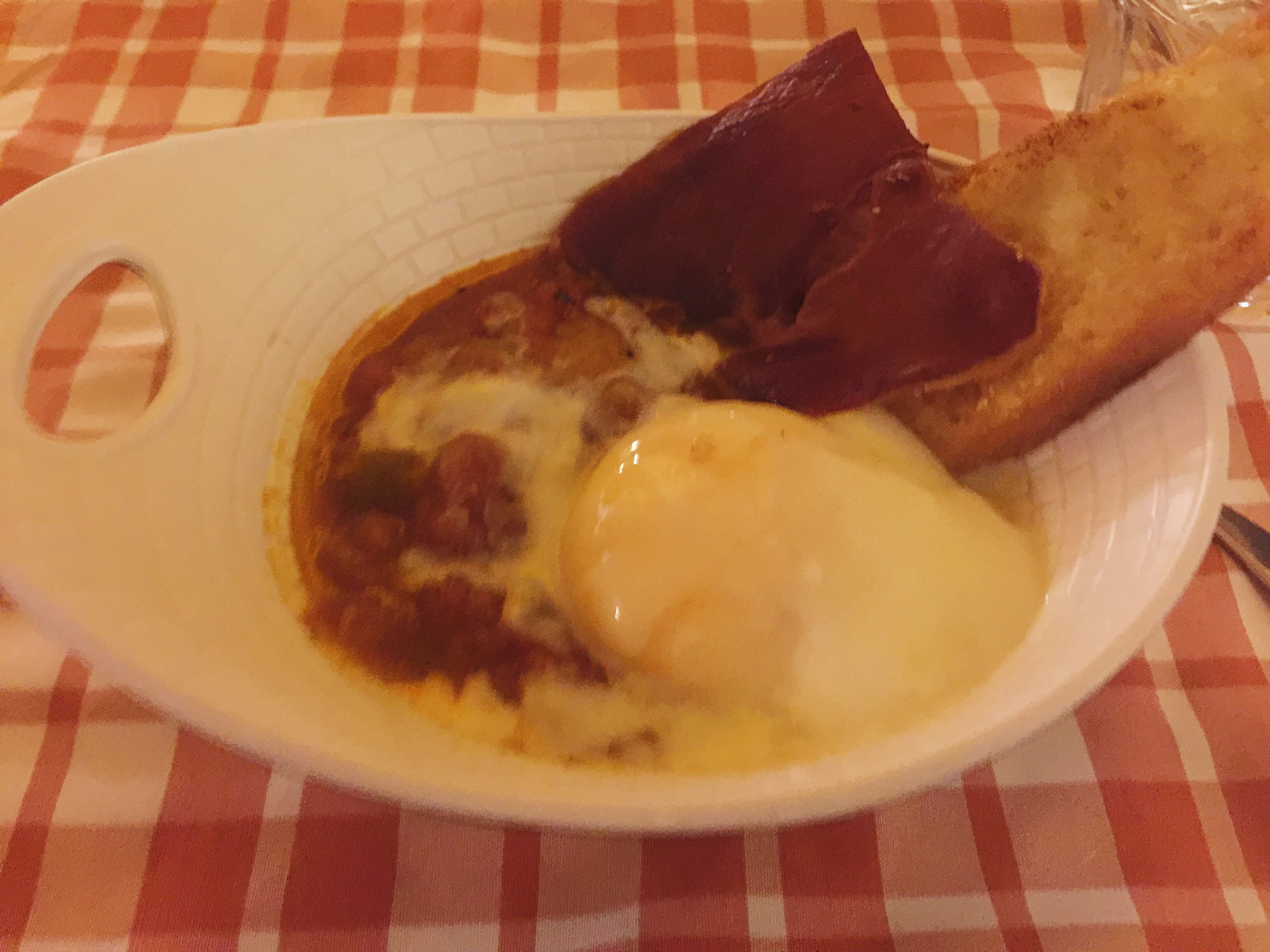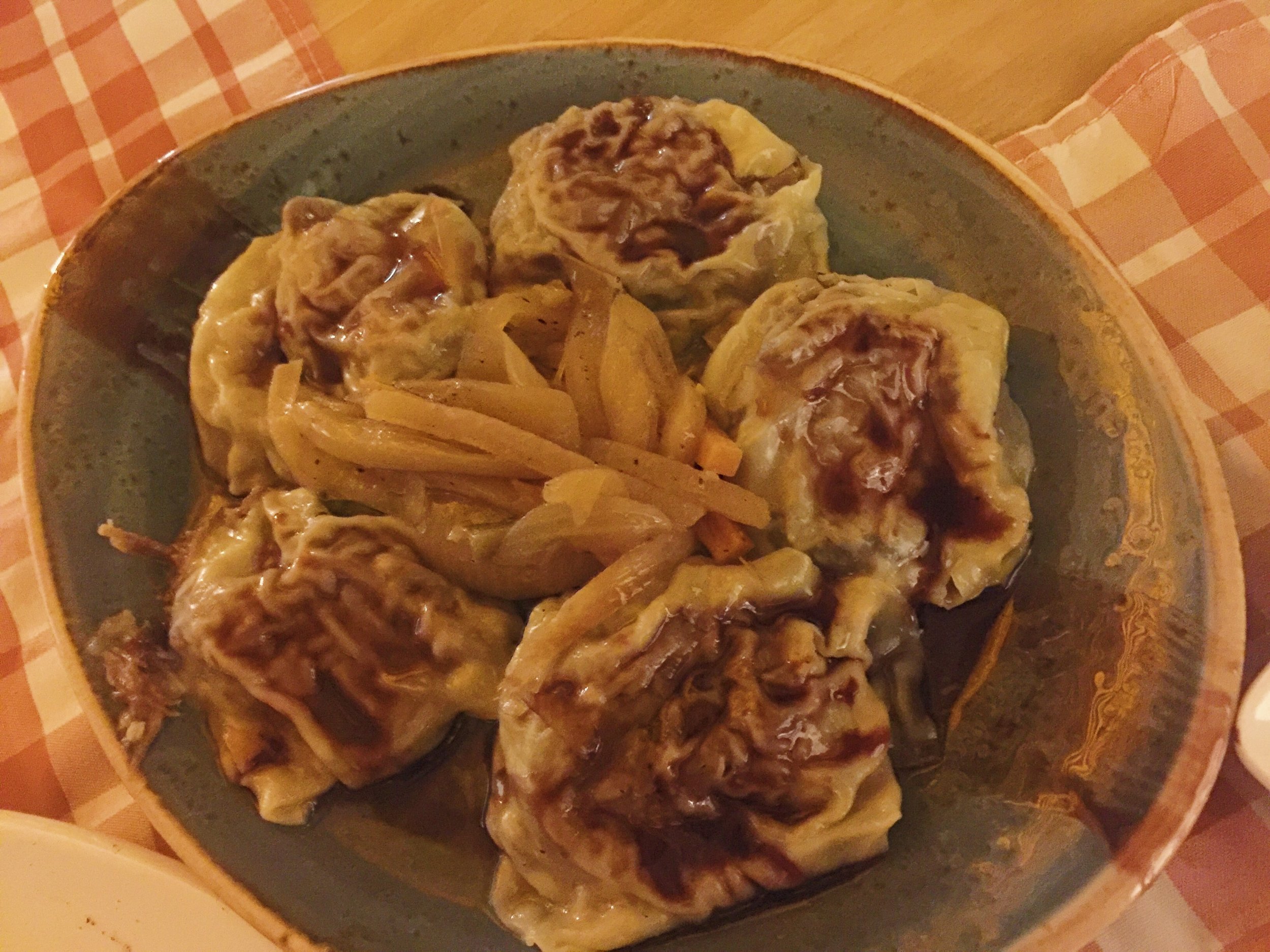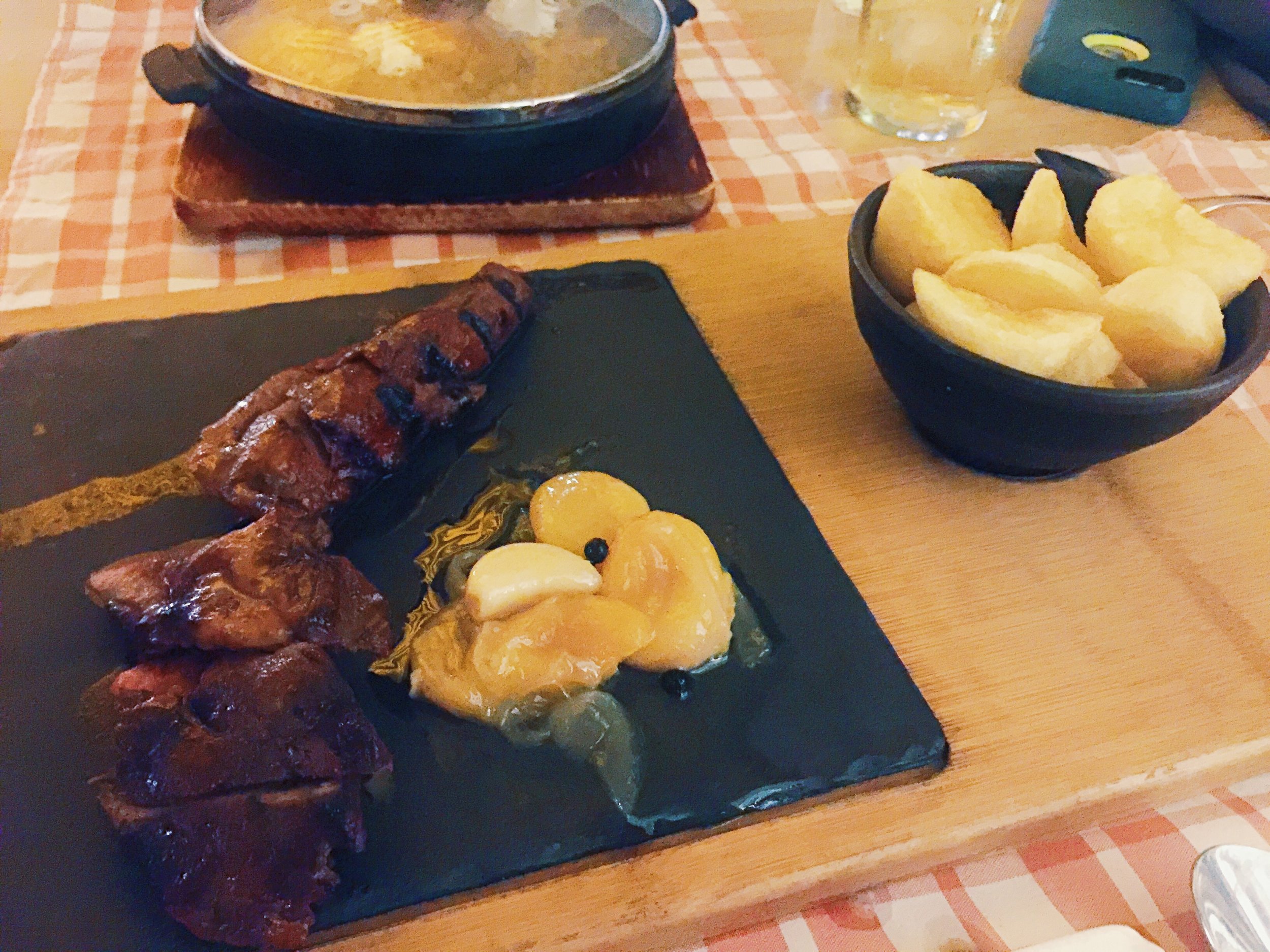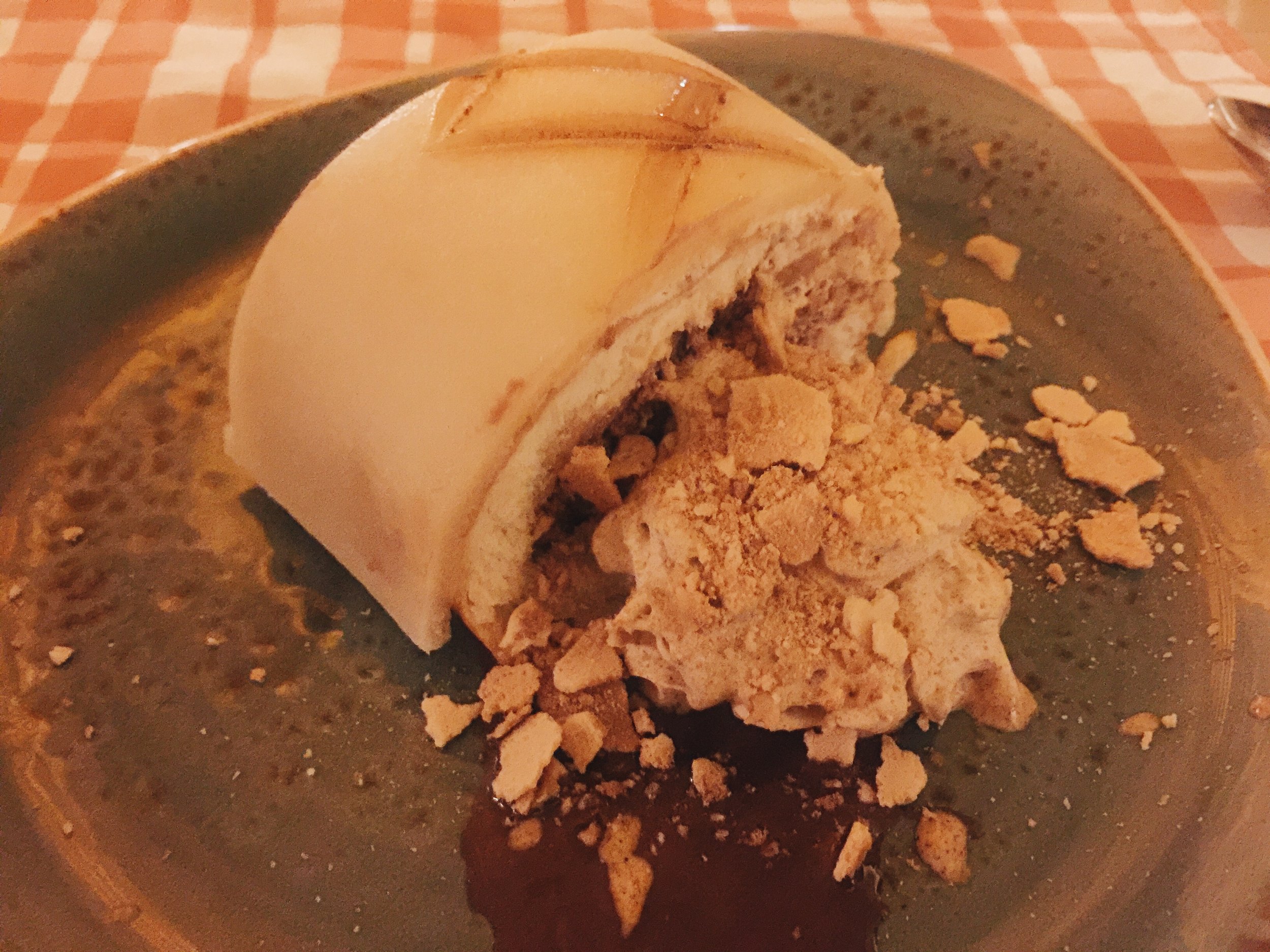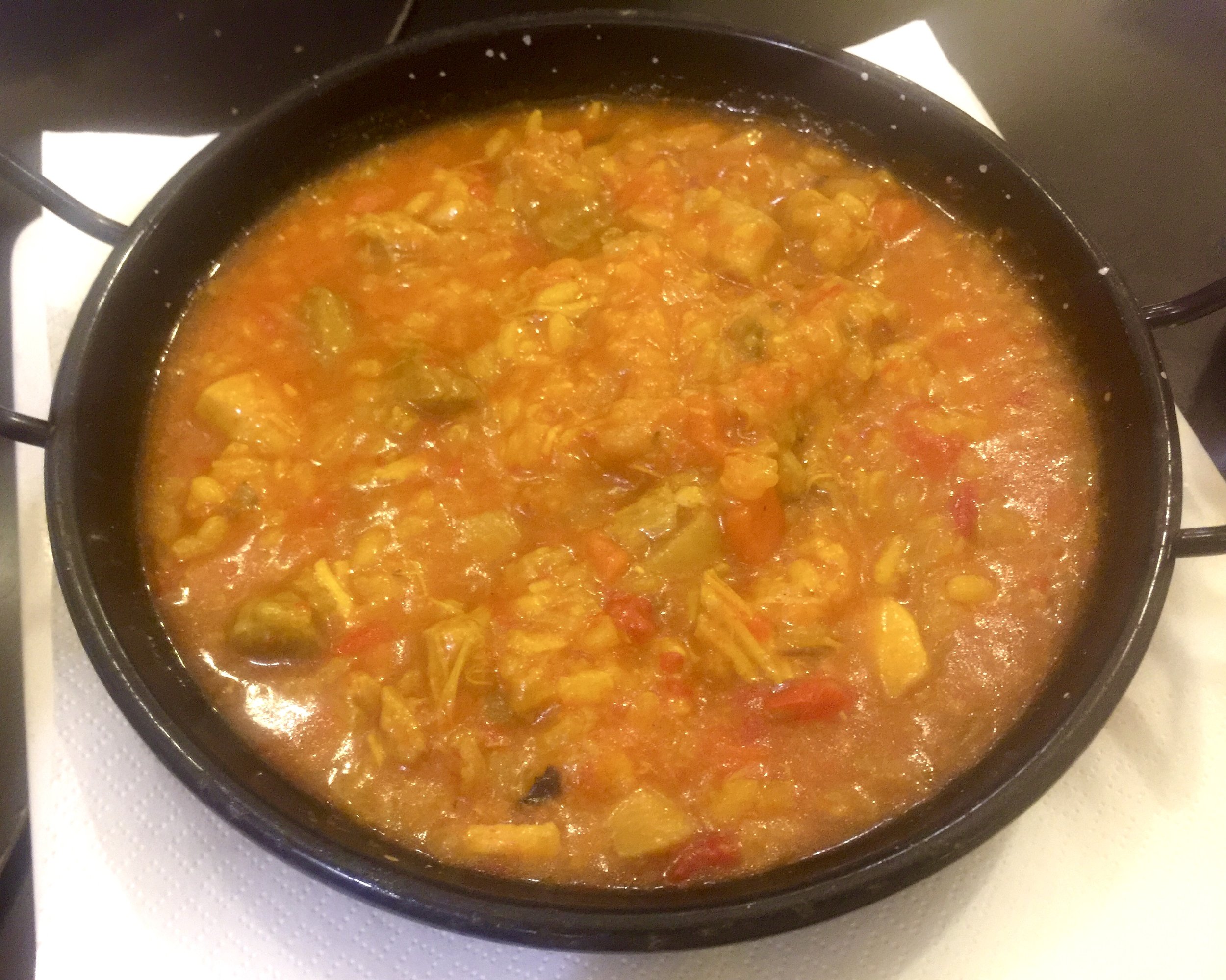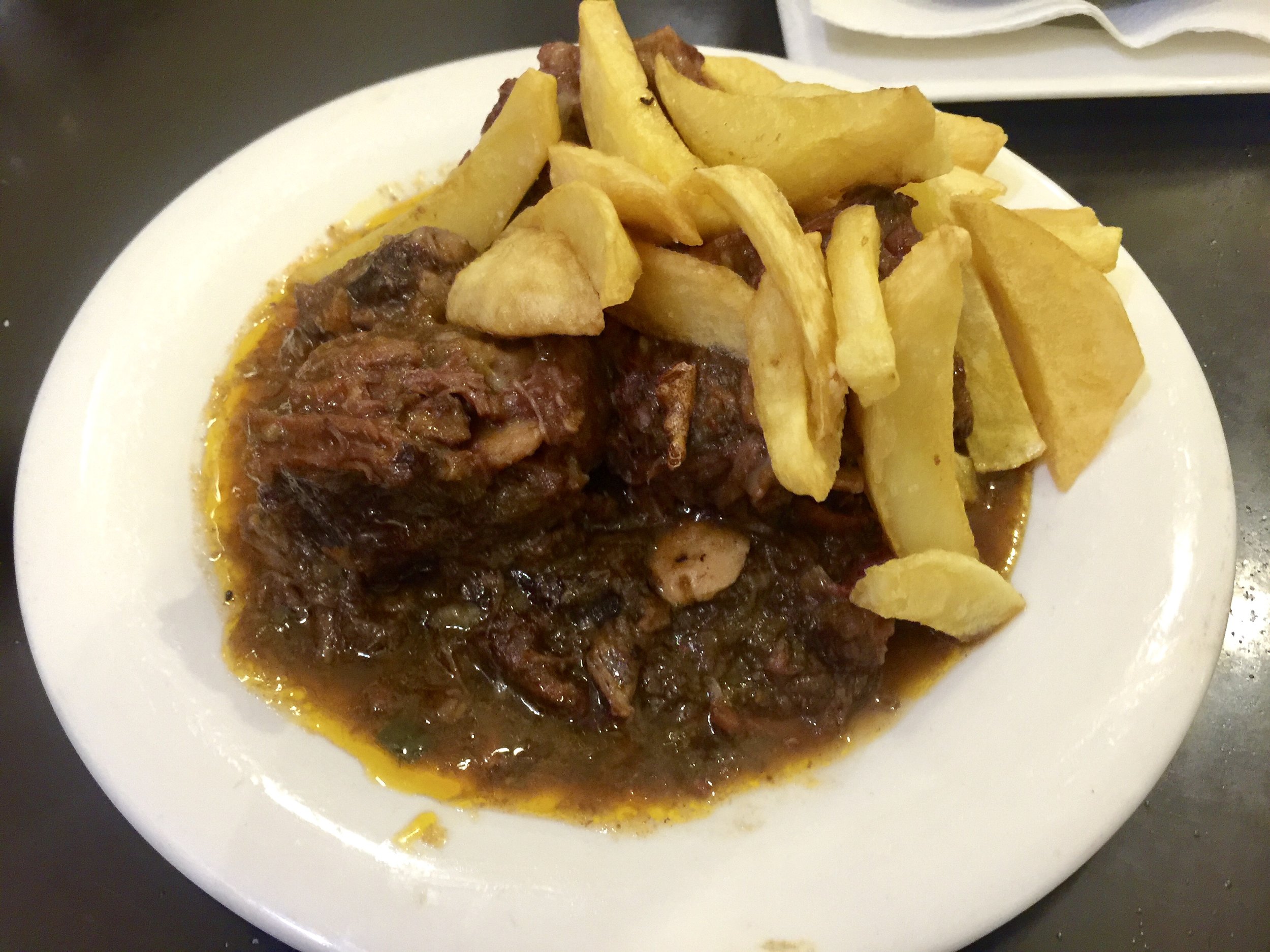






Spanish Road Trip
Spanish Road Trip
Spain evokes ethereal images of commanding women dancing in their fluttering red dresses, matadors valiantly fighting beasts, windmills from a bygone era positioned on rolling hills, and grand cathedrals towering over quintessentially Spanish cities. Though those tantalizing fantasies are part of Spain, the only way to discover the true flavor, culture, and people of this complex and beautiful country is via the road.
Pick up a car and cruise down the Spanish highways. Having a car is by far the best way to see Spain. It gives you the freedom to go anywhere and that is vital in a country where every town has their own distinctly wonderful culture. Only going to the big tourist cities like Madrid and Barcelona is great, but greatly disables you from being able to truly know and love Spain. The lesser known towns are where genuine experiences can be had and real interactions with new friends can be forged. Traversing around to many cities gives you a more diverse taste of what Spain has to offer; and it has a lot. I believe that the most rewarding part about traveling is to learn about a culture that is foreign to me and to make new discoveries and the way to do that in Spain is by doing a ROADTRIP!
On our long drives roaming around Spain I played this song every time. It's a quintessential road trip classic!

Madrid
Madrid
Madrid, el capital, is the perfect city to start our road trip around Spain. It's just touristy enough to let us dip our toe, yet so charming and authentically Spanish that it captivates you right away. The city is an exciting metropolis with world class cuisine, archetecture, and culture. There is a lively, infectious energy around the city no matter what time of day that gives you the energy and excitement to explore.
Day 1
After touching down in Madrid at Madrid–Barajas Airport, we went for an early morning snack at the classic Cafe San Ginés for their equally classic "churros con chocolate". This chocolateria gives a look into the 19th century with their marble tiled countertops and green paneled walls because they have been serving their delicious, classic treats since 1894.
After a quick nap, a culinary adventure awaits at the Mercado de San Miguel. It is a beautiful building with juxtaposing metal ornamentation and modern glass walls. In the market there are stands that serves delicious Spanish cuisine. There are some stands that serve small snacks like the angulas, baby eel, or stalls with counters that sell larger dishes that you can sit down to eat like their seafood stall. In the market you can find anything from chocolate to fried fish to caviar in the market. Mercado de San Miguel is also a great place to sample the world famous jamon, Spain's famous dry-cured ham, from certified jamon slicers.
After lunch we went on a tour of the Royal Palace of Madrid. The palace is still the official residence of the royal family of Spain and the locale of many state ceremonies. Every single one of the 3,418 rooms in the baroque palace is lavishly decorated with beautiful wall paper, frescos, furniture, and chandeliers. Each room is adorned by artifacts from throughout Spanish history including armor, ornate clocks, and Spanish paintings. The Palacio Real also showcases an exhibit and at the time I was there it was a huge art exhibition entitled "From Caravaggio to Bernini". The most unbelievably beautiful treasures of 17th century Italian art were on display from artists such as Bernini, Velázquez, Carracci, and Caravaggio, whose Beheading of Saint John the Baptist is what the exhibition revolves around. The beautiful collection of masterpieces were enthralling, but the rooms of the palace that hold the art were too beautiful to be ignored. The palace is a treasure box filled with priceless works and artifacts, yet is also a piece of art in its own right.
Parque del Buen Retiro, which literally translates to Park of the Pleasant Retreat, is the perfect place to wind down after a long first day in Madrid and to spend some time before dinner. El Retiro was built as a garden only to be enjoyed by the wealthy ruling class of Spain until the late 19th century when it declared a public park. The magnificent park is filled with graceful monuments, gardens, and statues that ornament the park for visitors of all kinds to enjoy. At the center of the park is a peaceful lake with a towering Monument to Alfonso XII in its back drop. The best way to see the monument and the other treasures that surround the park is by renting a boat to row around the duck and fish filled lake.
For dinner..... El Resturante Botin. Botin, founded in 1725, is a must try restaurant in Madrid not only for its claim to fame of holding the Guinness Book of Records for world's oldest restaurant, but also for their delicious madrileño cuisine. When you step into the brick walled, cavernous restaurant you feel the history that has taken place there and see the walls that have been seasoned with centuries of evolving times, stories, and people. It makes you realize that the only constant in all this time is Resturante Botin. It feels really special to be part of that legacy and enjoy the food that has been served for hundreds of years.
Botin is not a restaurant that just rests on their fame. They work hard to keep their standards as high as they have been for hundreds of years and that is very clear because their food is seriously delicious! Their menu includes Spanish classics like cochinillo asado, a traditional Segovian dish of baby roasted pig. The pork is so tender and moist, but the best part is the thick, yet glassy skin that gives it an incomparable crunch. In the downstairs of the restaurant there are stacks of robust, iron pans on the tile counter each with a slab of glistening meat resting after being baked in their ancient oven. Another popular dish is the roasted baby lamb, or Cordero Lechal. These baby lambs are so young that they have not yet eaten grass, so the meat retains a creamy flavor from the mother's milk. The dish is incredible, if you can look past the moral delemia.
One of my absolute favorite parts of being in Madrid is the electricity that can be felt at night. In the night you can explore a neighborhood with very different eyes, than you would be able to experience during the day. Running around town with the rest of the Madrileños is a great way to feel like a local and to discover hidden jems that will make really your trip.
Day2
Our second day in Madrid started off with a visit to the most beautiful, unbelievably ornate home I have every seen. The Museum Cerralbo is located in a 19th century residence that houses the collections of Enrique de Aguilera y Gamboa. The museum is the most grand residence with walls plastered with the most beautiful paintings, dark wood rooms that feature armor, and a quaint courtyard with beautiful sculpture. Each room is curated expertly to showcase a specific portion of their extensive collection. Some have Chinese treasures, others are filled with armor, and others with ornate Murano glass chandeliers. The Museum Cerralbo is a lesser known museum, but a must visit.
A great way to get a delicious snack is to go down one the quaint side streets and walk into one of the many local grocery stores and choose from the delicious fruits and vegetables. The small alcove tiendas offer the most delicious produce that are grown locally and brought to the stores while still bursting with freshness. You can sample all of the honeyed, aromatic fruits that are specific to Spain.
After a quick snack, we went to discover another breathtaking art museum, the Museo Nacional Centro de Arte Reina Sofía. The museum is Spain's national museum dedicated to contemporary 20th-century art mainly by Spanish artists. The Renia Sofia highlights expansive collections of Spain's two greatest 20th century masters, Pablo Picasso and Salvador Dalí. The once 18th century hospital is now an enormous and grand museum with galleries upon galleries of masterful Spanish paintings, sculpture, books, and film. The most famous work of their collection is Picasso's painting, Guernica. Along with the renowned art, the beautiful architecture of the building that houses the work is also equally captivating. In the enormous museum it's not hard to get lost and take a private walk along the arched hallways or even take a look in the calm gardens that feature Alexander Calder's Carmen, a minimalistic, geometric, moving sculpture.
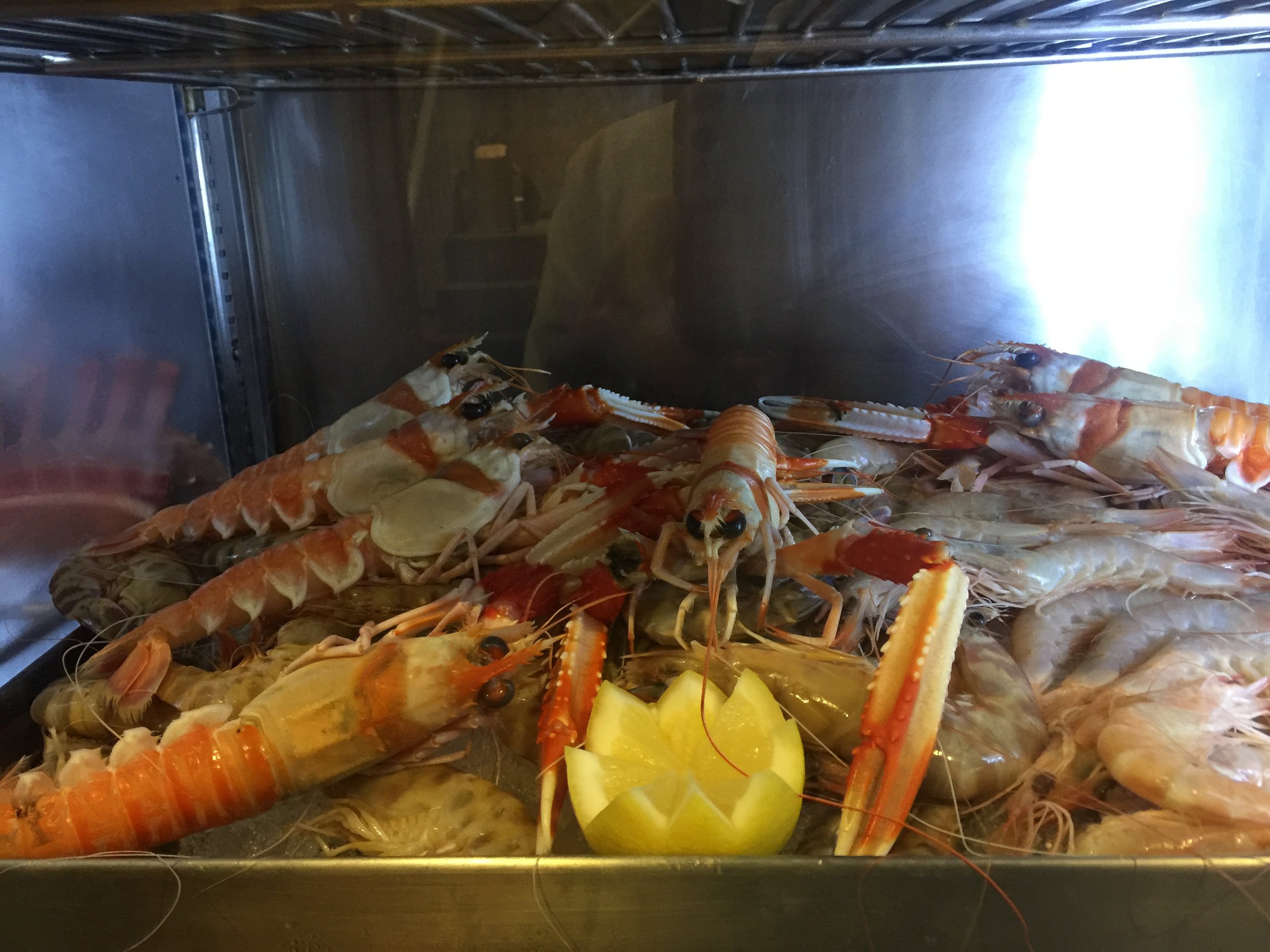
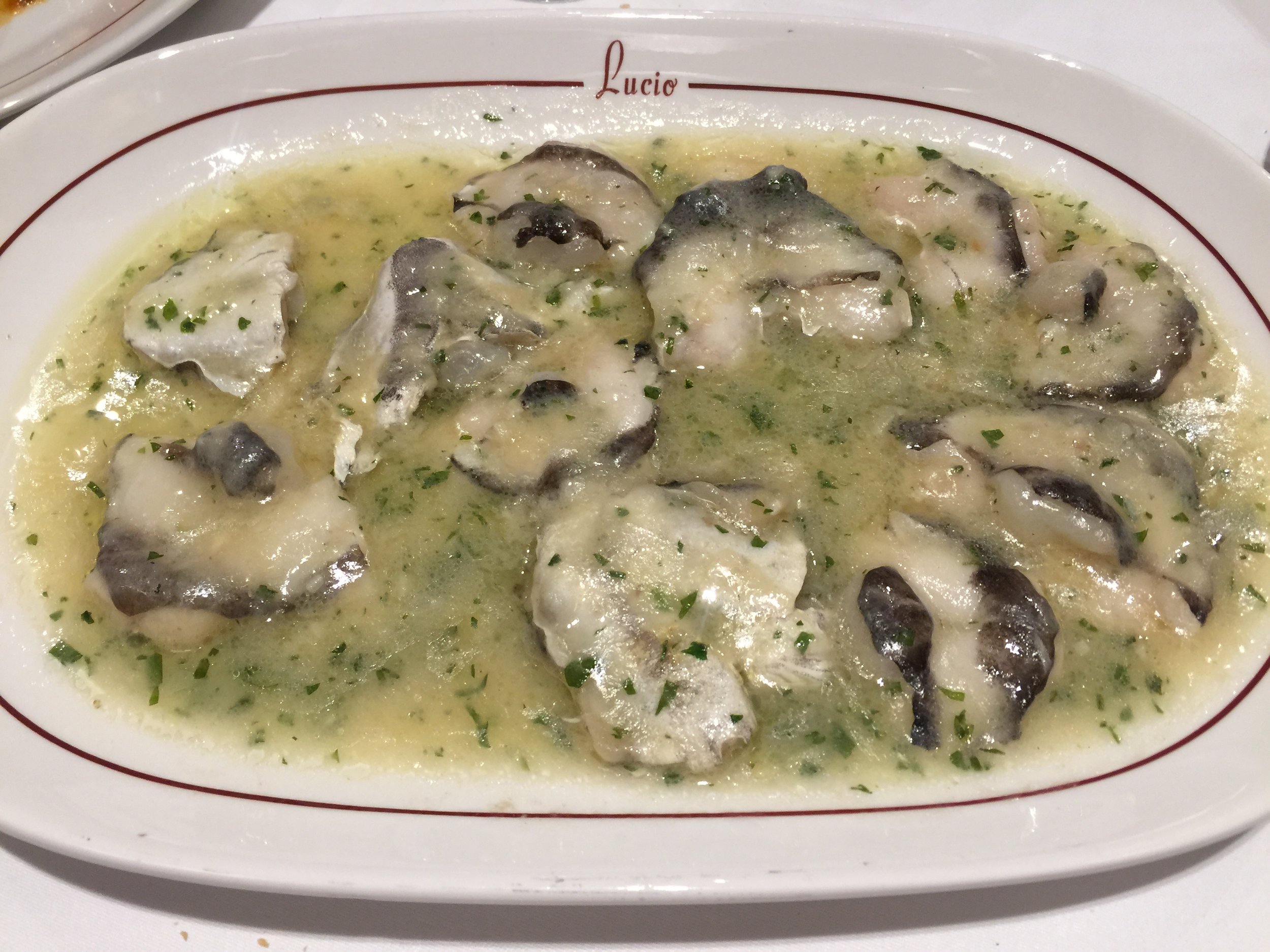
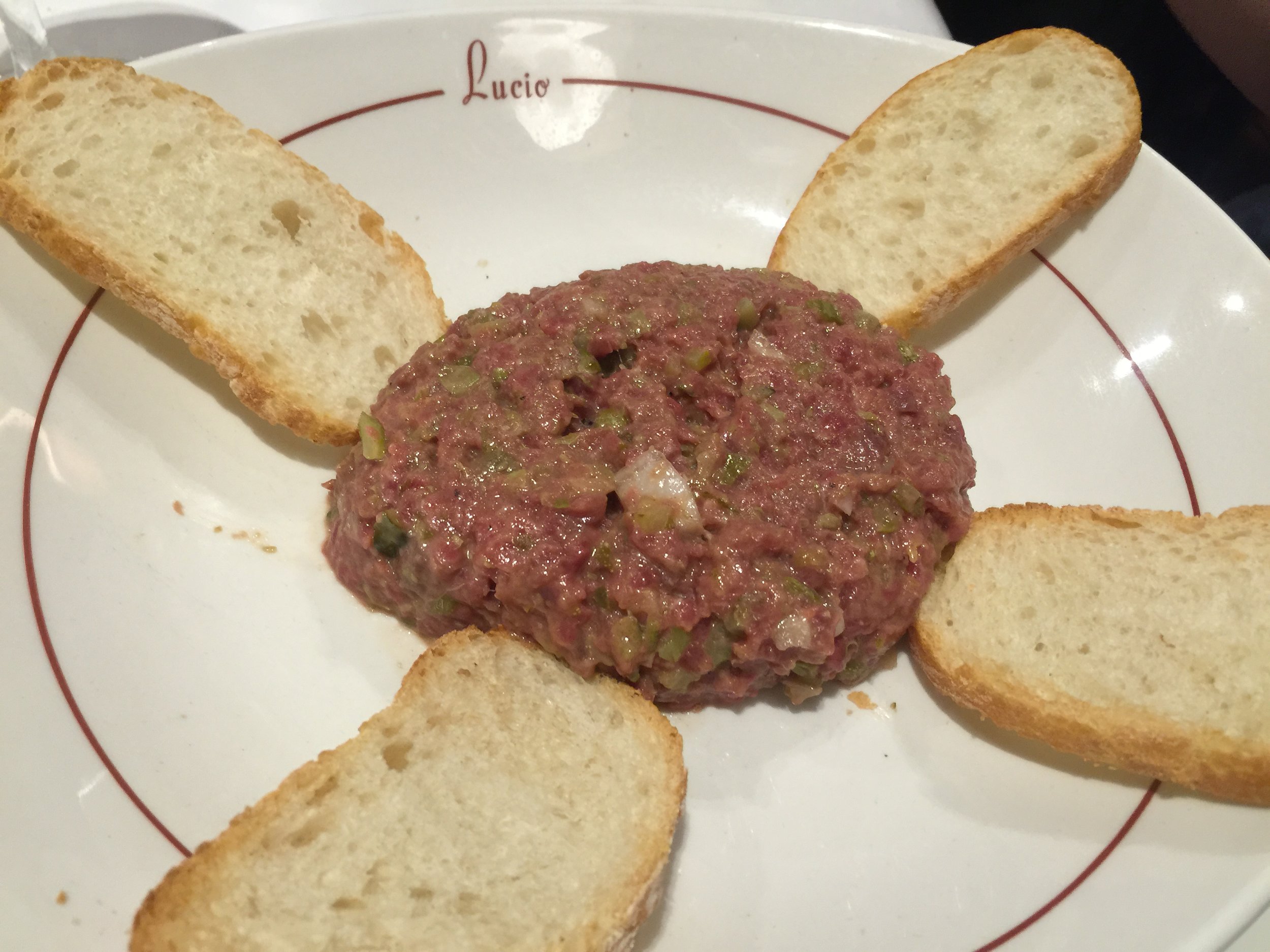
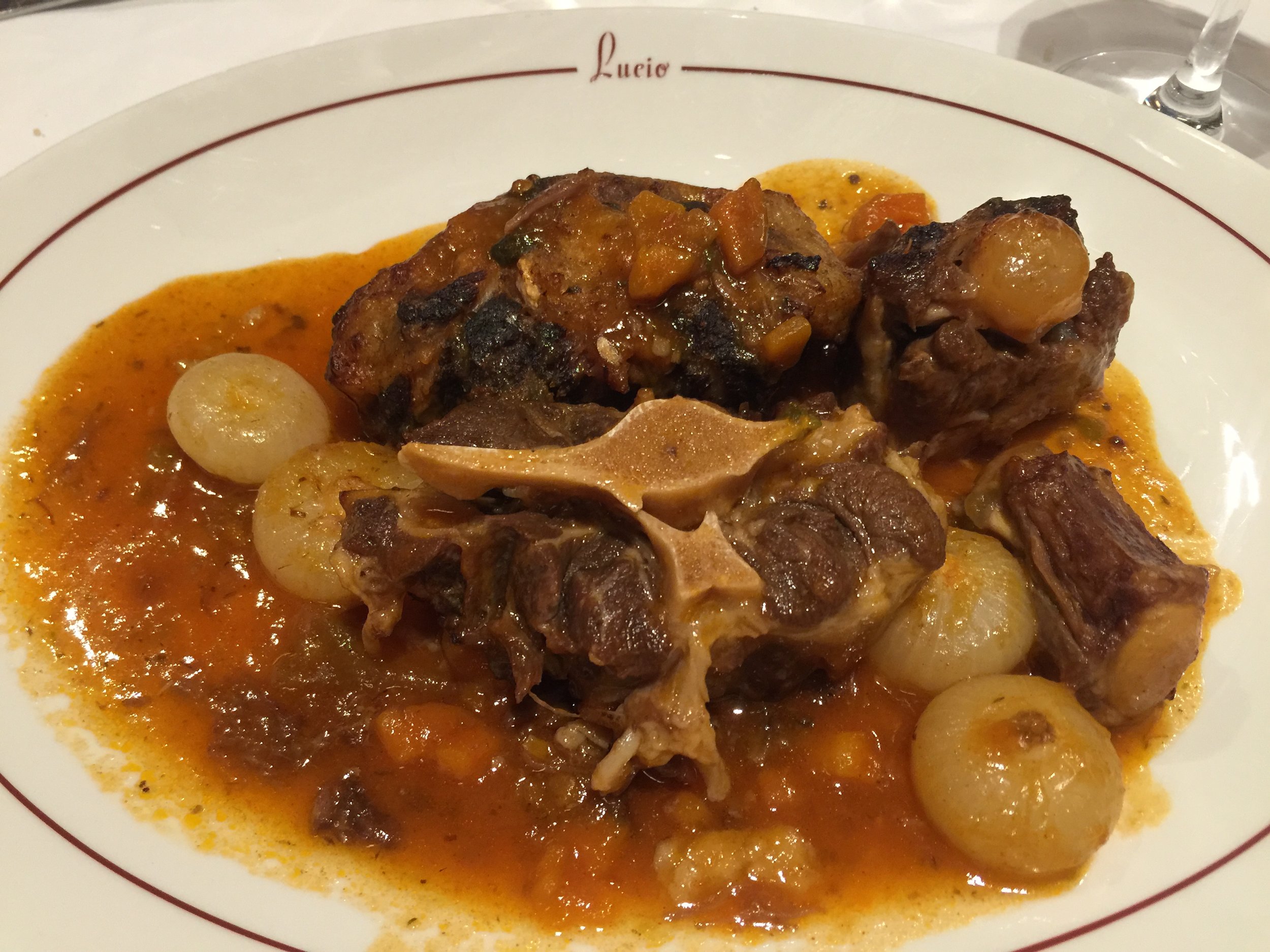
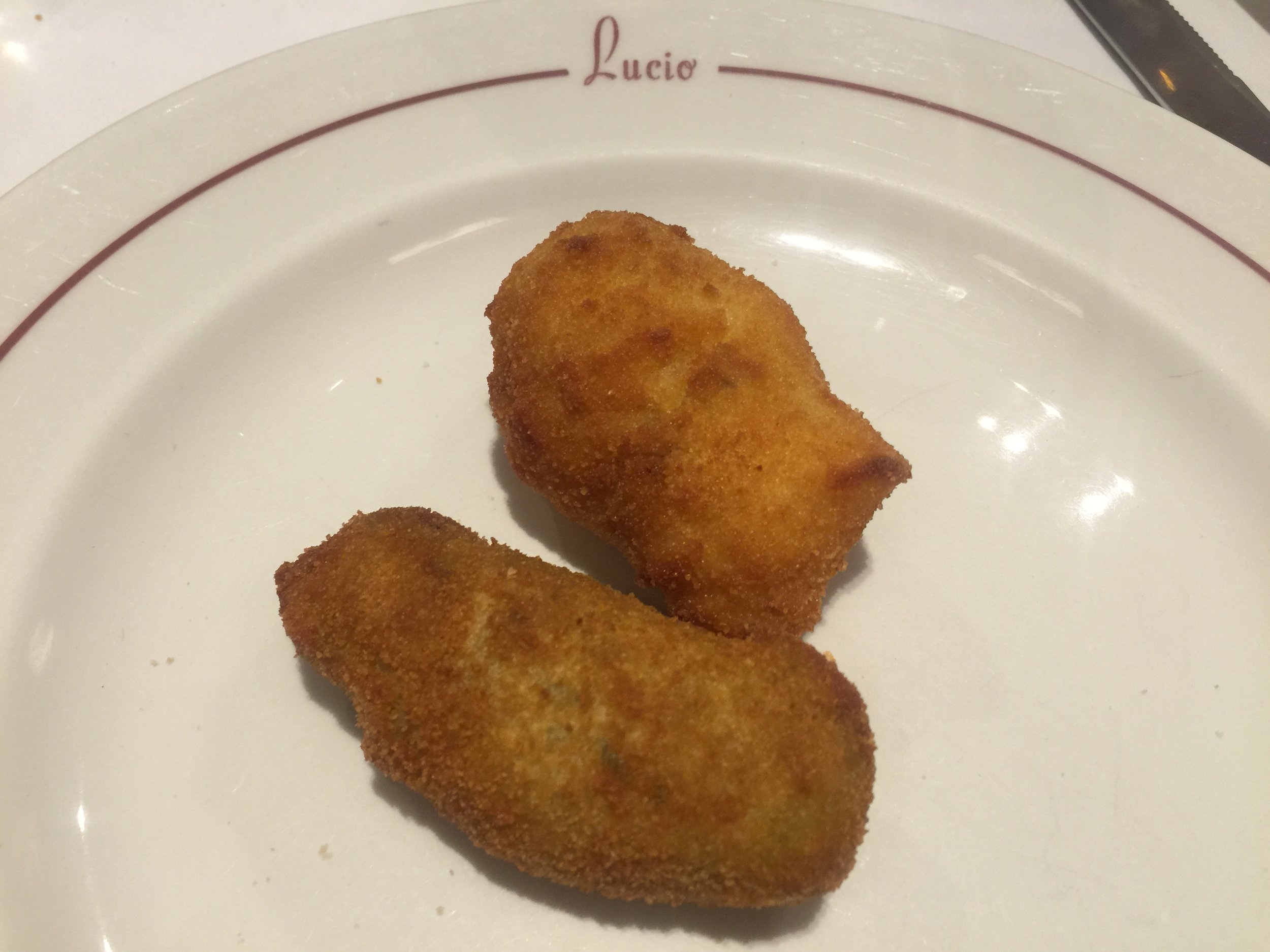
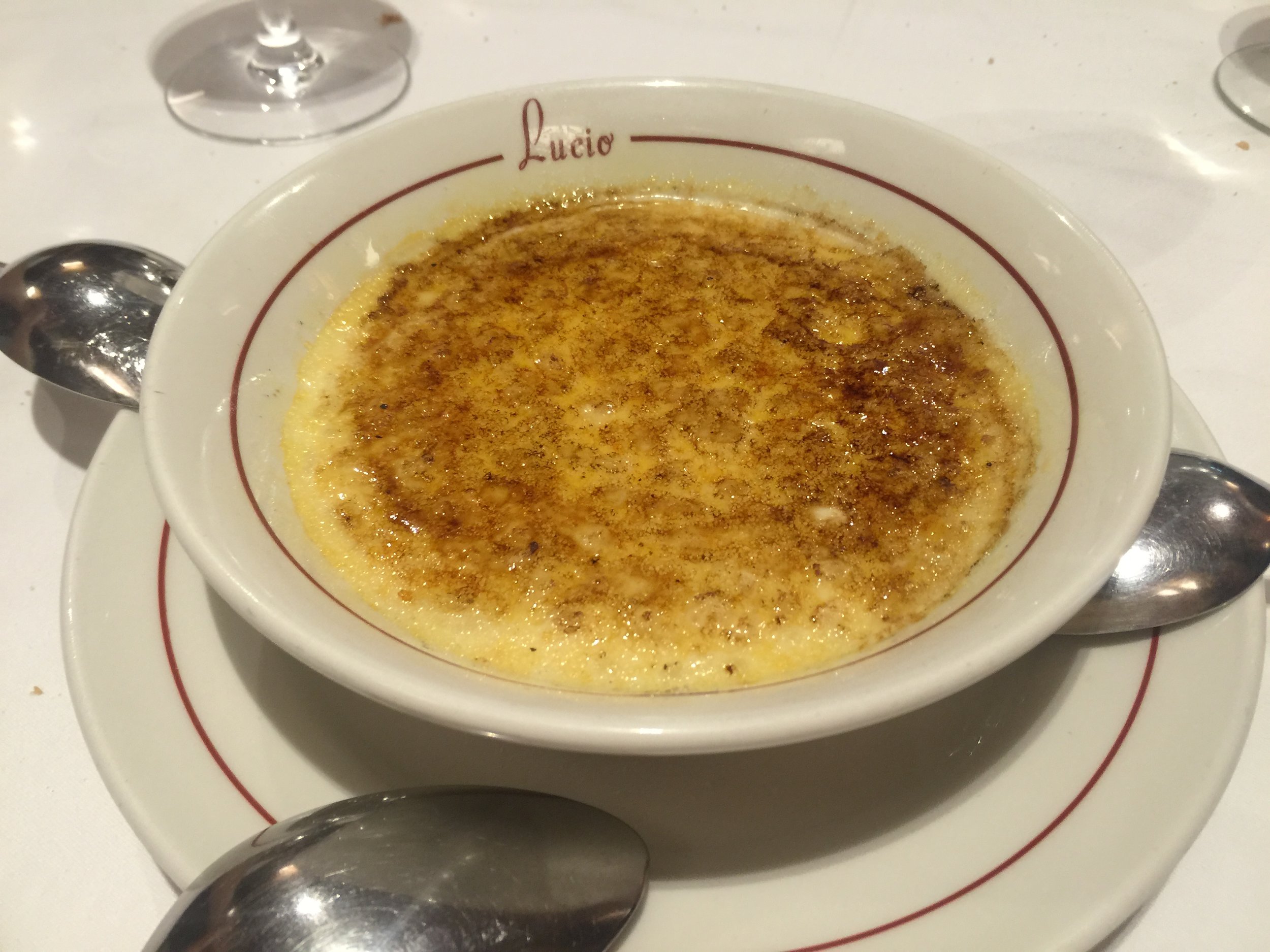
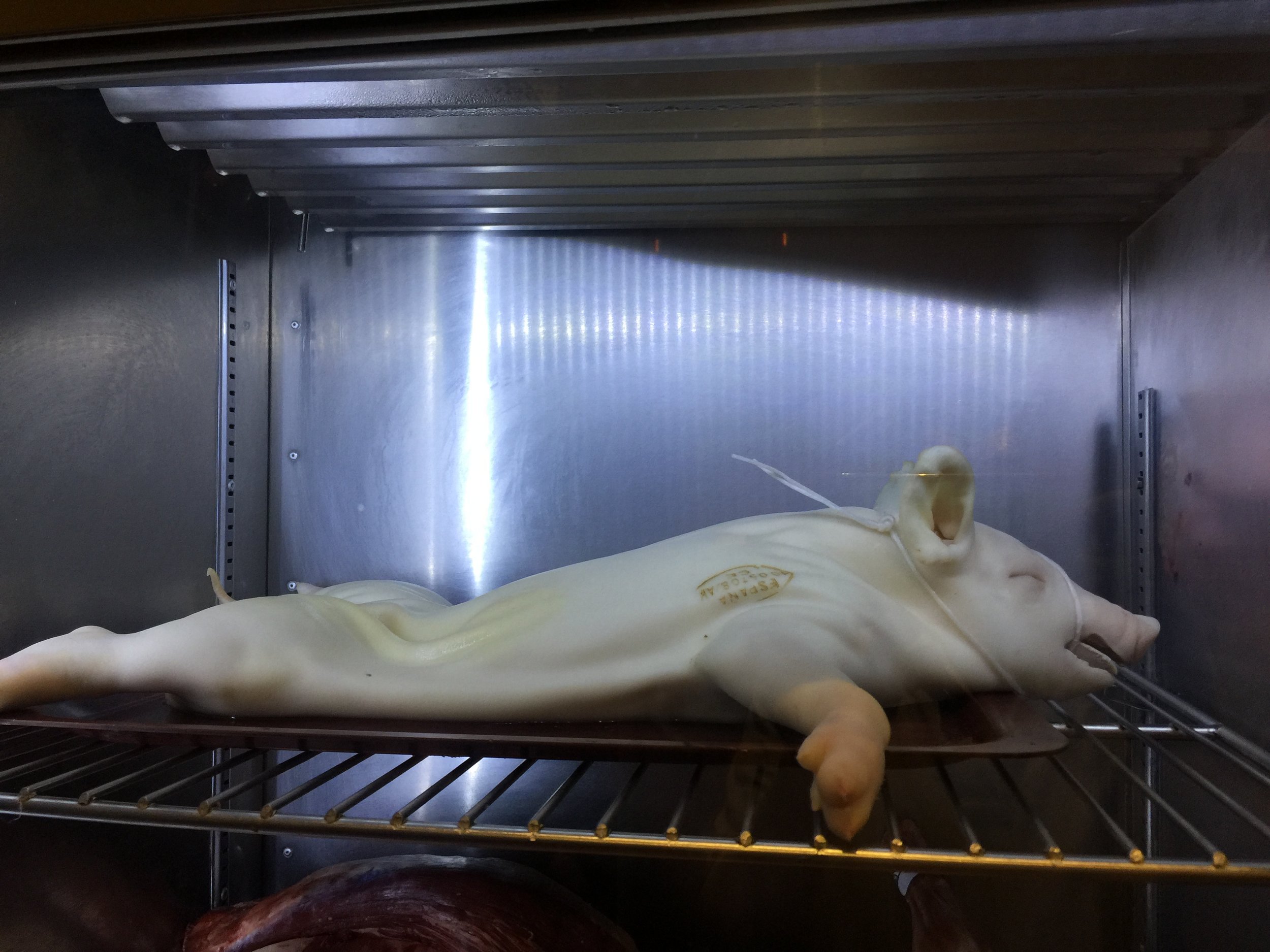
Casa Lucio is the only restaurant in Madrid that can compete with Casa Botin's renown; this is where the king of Spain dines. Casa Lucio remains in the century old location that once housed Mesón El Segoviano, the restaurant Lucio Blázquez at 12 years old worked at. Lucio Blázquez, who is now in his eighties, still come to his restaurant every day to welcome guests and show his enthusiasm and devotion for his restaurant.
At Casa Lucio quality ingredients are prepared into traditional Spanish dishes, so that these culturally import dishes will live on. In Madrid you can find croquettes everywhere in all stores at all times, but at Casa Lucio the croquettes are truly special. The ham and spinach croquettes have the a paper thin, crips shell that coat the piping hot, creamy, oozing filling with tons of flavor. The hake cheeks are a traditional Spanish dish of gluttony because it only includes the best morsel of the fish. The fatty, gelatinous cheeks are lightly poached in a thickened garlic chive sauce perfect to be sopped up with their crusty bread. The steak tartar is of amazing quality that can be tasted in the beef, which is chopped to a perfect texture. The richness of the beef is counteracted by the crisp, sourness of the capers. Their natillas is a house made custard is thick and rich toped with a slightly bitter caramalized sugar layer.
Day 3
Breakfast, our most important meal of the day is FAST in Madrid. People rush in, get a spot at the counter, order their food, a coffee, scarf it down, off to work. In La Mallorquina, a cafe and pastry shop in the center of Puerta del Sol, you can get a perfect breakfast of a crisp glazed croissant with a slice of salty jamon and a slice of creamy cheese and a tender apple tart. The cafe is chaotic in the mornings because it is filled with people rushing to work. They choose to start off their buzy day at La Mallorquina becuase they know they can have a well made coffee and a delicous pastry and carry on.
Walking through Madrid is the best way to see the city. It's magical to walk through the city; to explore the shops in the city center and to feel like a local wandering the smaller side streets. Each neighborhood in Madrid has a different feel to it and each is special in its own way.
Every city with a palace has a changing of the guards, but if you get there at the right time you can see it at the Palacio Real. Their ceremony is well choreographed and surprisingly accessible. The neatly dressed guards go through their routine along with the practiced horses under the elegant backdrop of palace.
In the center square of La Puerta del Sol, there stands Madrid's most important statue, El Oso y El Madrono or The Bear and the Strawberry Tree. The statue has become the symbol of the city of Madrid.
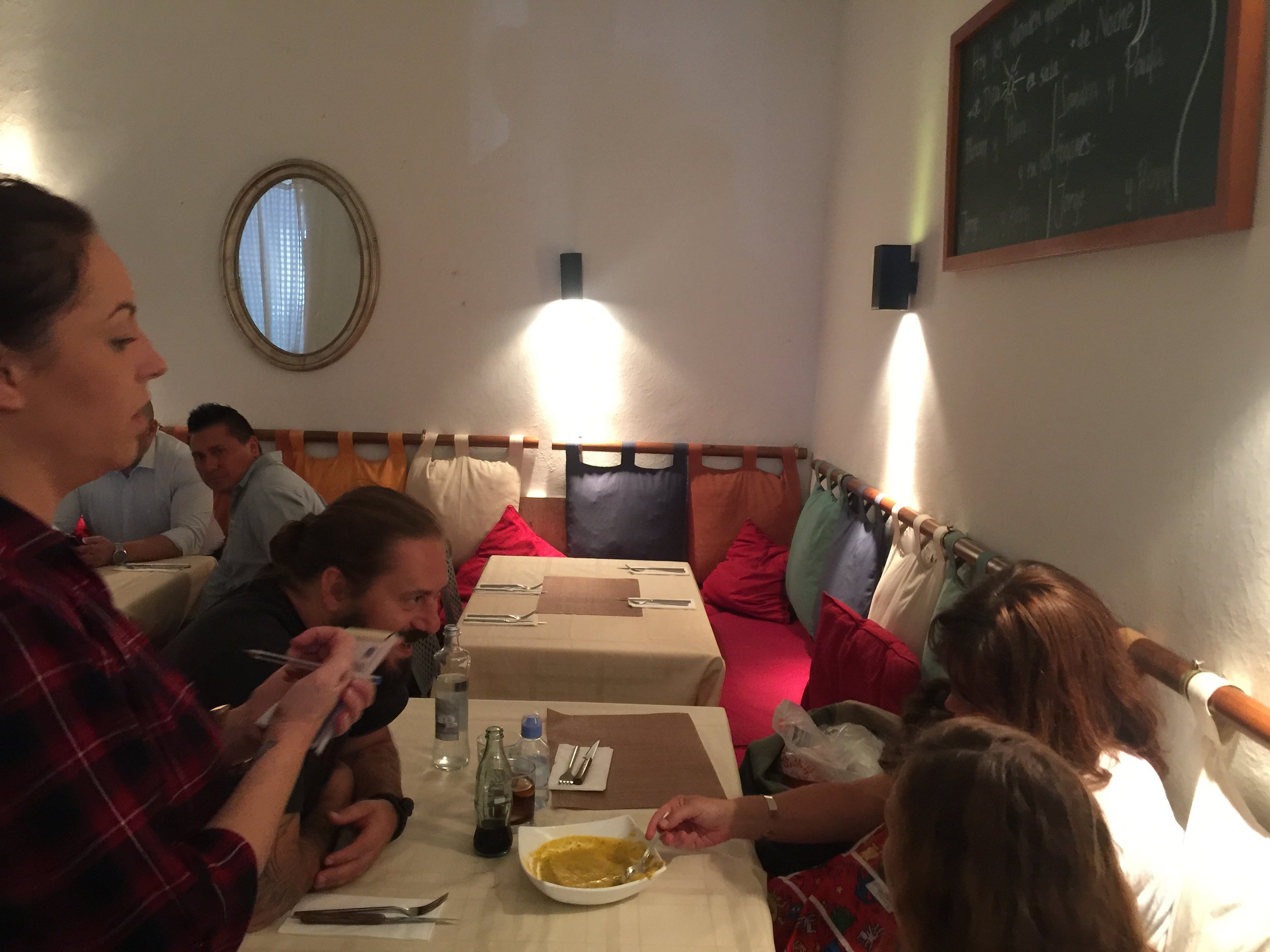

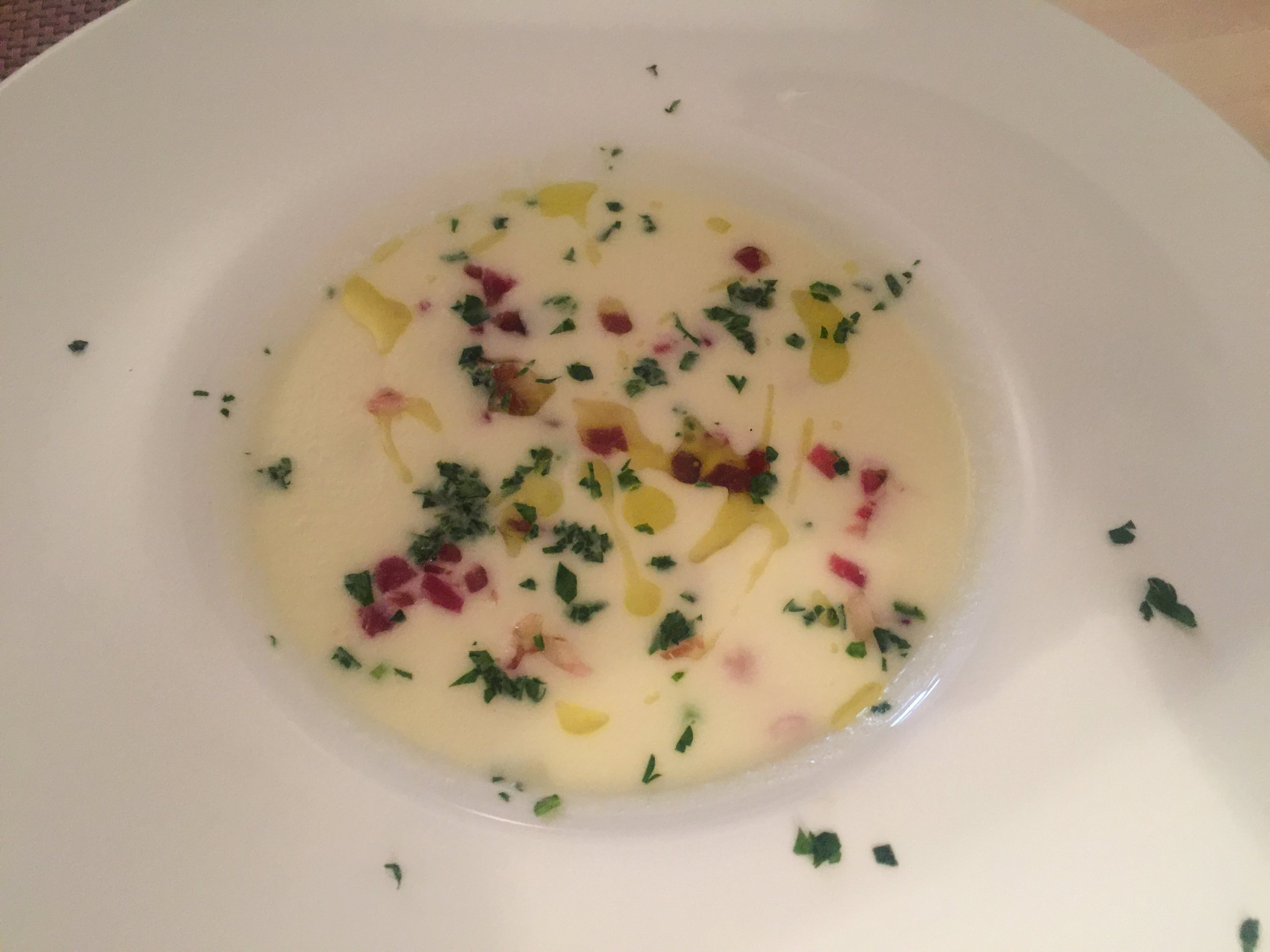
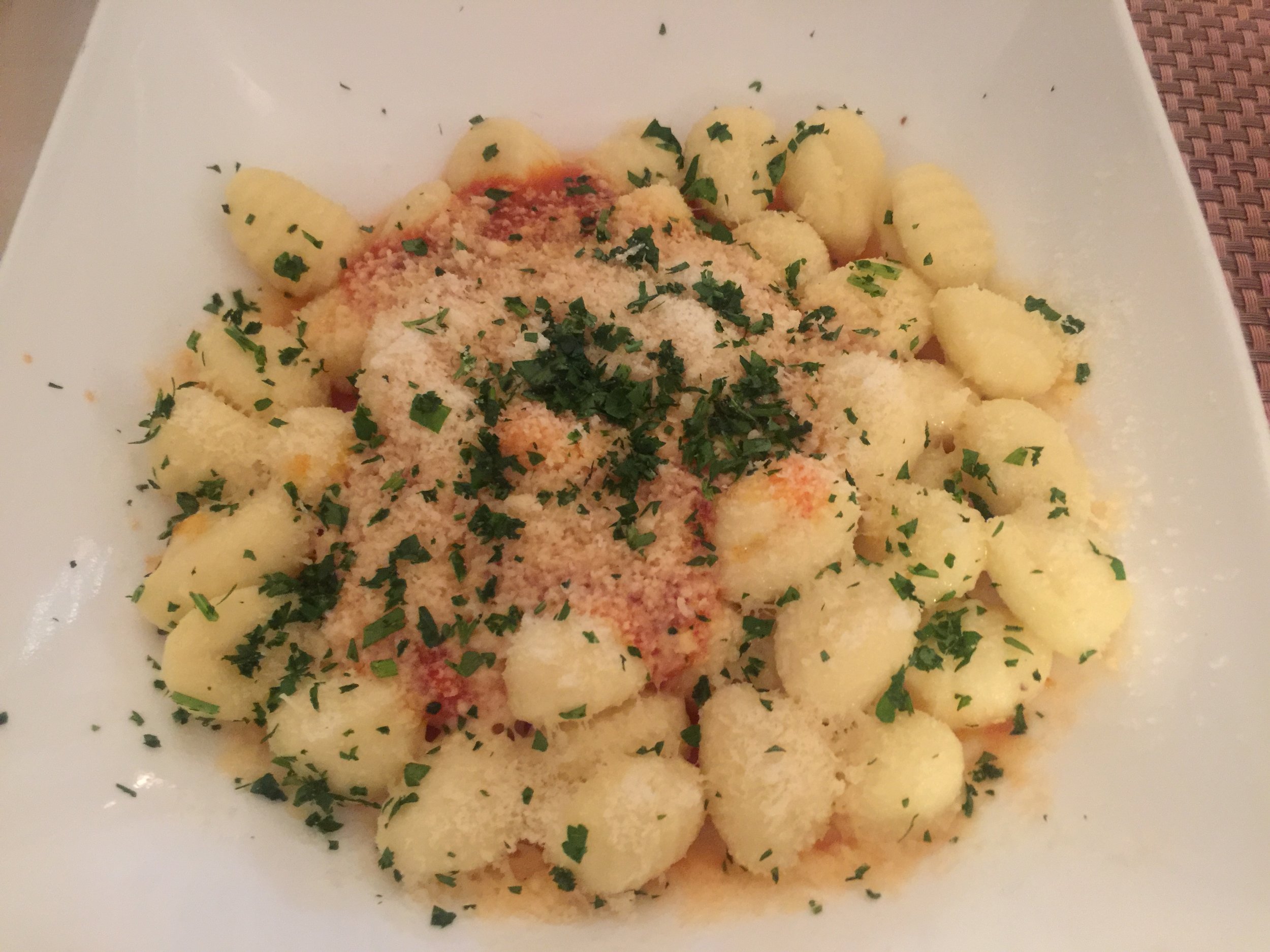

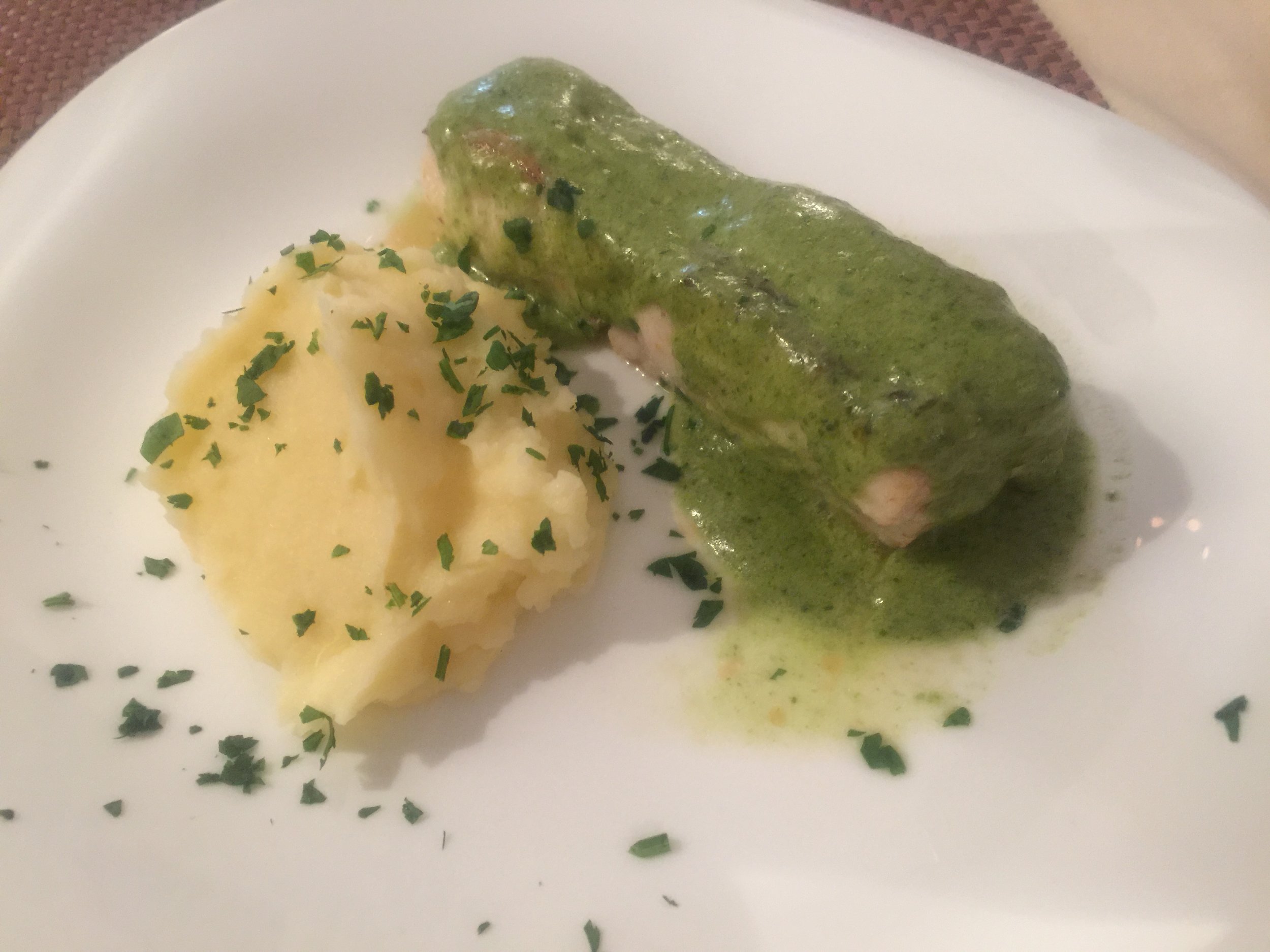
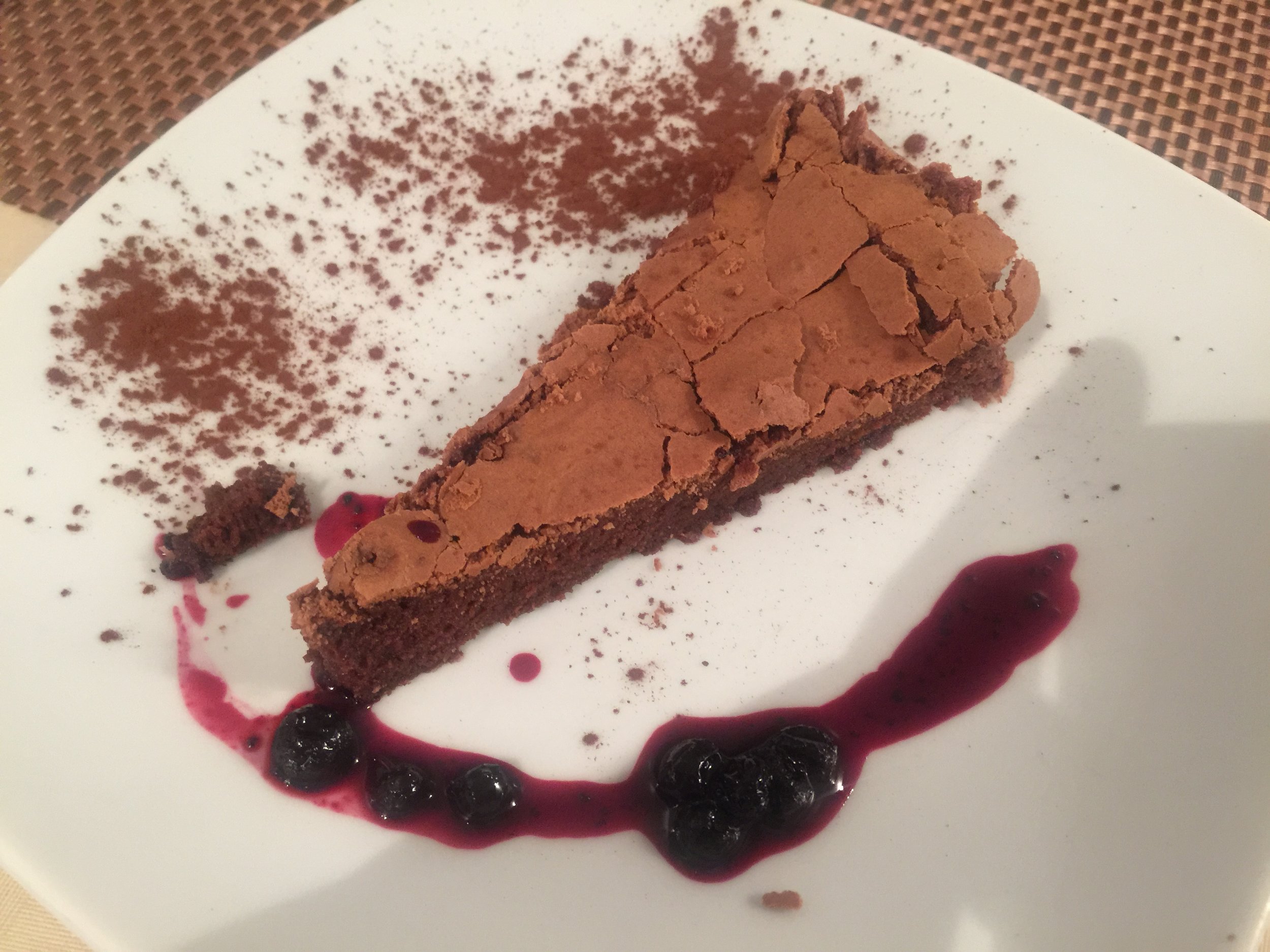
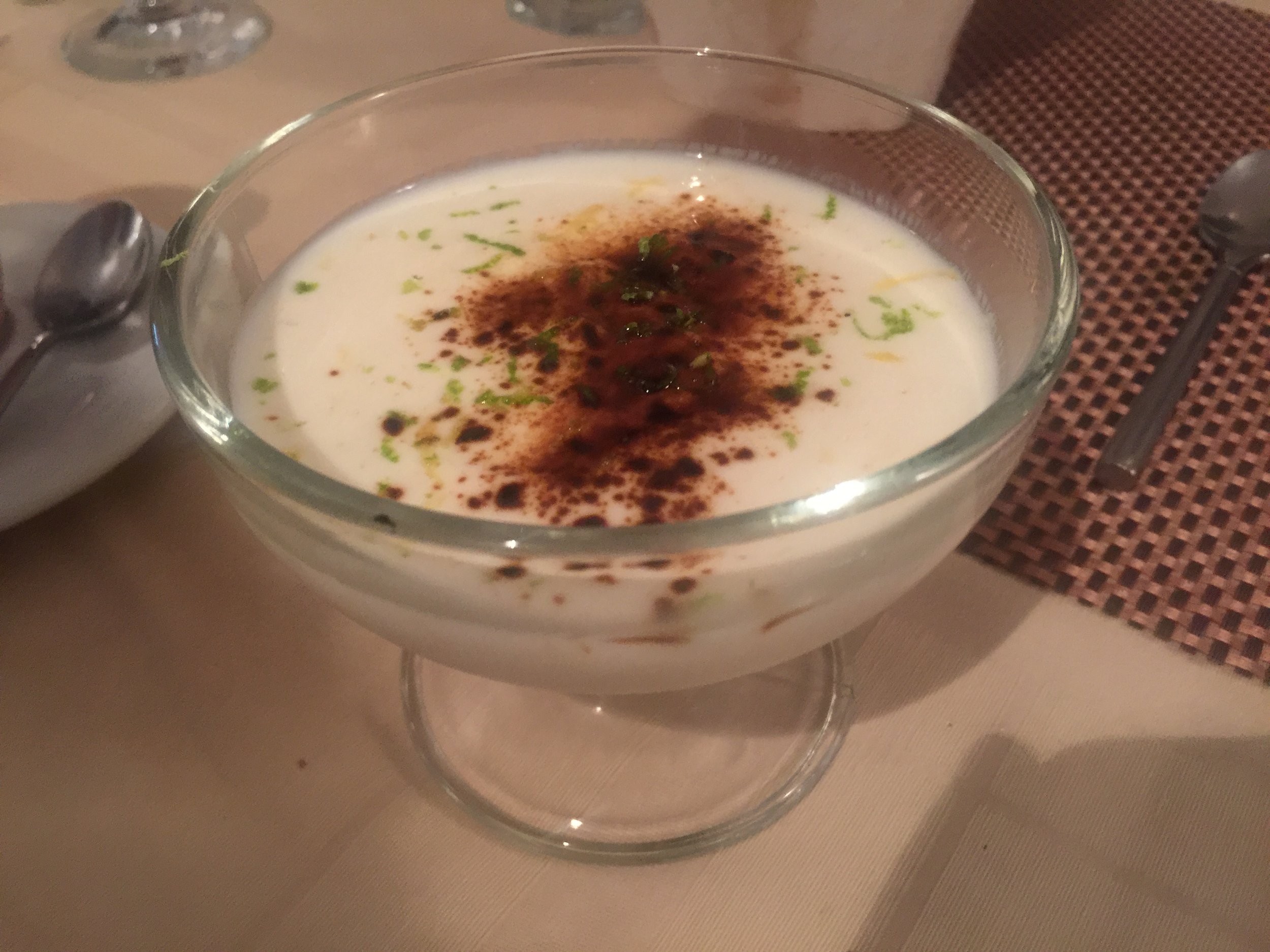
After eating at the classic restaurants in Madrid, lunch at a more modern Madrileño restaurant, Resurante Gabriel, was in order. On the top of a hill in the vibrant, hip Universidad neighborhood of Madrid. Gabriel reflects the atmosphere of the neighborhood in its bohemian decor of clay walls, mismatched pillows, and trinkets from the owners' extensive travels. The warming, genuine feel of the restaurant makes it a very comfortable place to eat. The Resturante Gabriel has a menu of the day for only 14 euros that changes each day based on what is available at the markets, so the patrons get to taste the freshest ingredients created in the most creative, delicious dishes.
For the first course, salad with pate and an apple sauce. The sweet fruitiness of the sauce is perfectly balanced by the creamy slice of pate to create a very balanced, flavorful salad. They also had a crema of melon and jamon. They took the classic dish of salty jamon with fresh melon and turned it into a cold creamy soup. The soup is amazingly refreshing and the drops of spiced oil gives the soup a more complex taste. Gabriel also makes a delicious rabbit with puffy house made gnocchi. The gnocchi are made with so much skill and the lightness is again well balanced by the heartiness of the rabbit. Their duck breast is cooked perfectly rare and over a sweet sweet potato and orange mash. Their hake is cooked a la plancha with a fresh green basil sauce and creamy mashed potatoes. For dessert, an absolutely delicious chocolate cake with a blueberry compote. The dark chocolate cake with the subtle sweetness of the berry sauce is rich and satisfying.
Madrid was the perfect hook into Spain, but now we are off to....................................

Segovia
Segovia
The next stop on our tour throughout Spain is in Segovia. This small city may seem like it doesn't have much and is painfully out of the way, but it does have a massive piece of history that absolutely cannot be missed. Not only does it have an ancient Roman aqueduct, but the ancient town of Segovia is also home to an enormous cathedral, a fairytale castle, and most importantly to me it is the birthplace to many very important quintessentially Spanish dishes. The town is so chock full of history that in 1985 the entire old city of Segovia and its aqueduct were declared World Heritage Sites by UNESCO.
Day 4
Just a few hour drive from Madrid, Segovia feels like a different world. The historic, quiet town is a steep departure from the bustling city of Madrid, but just as special. Segovia looks and feels like a village taken straight out of a fairytale with its old world charm, ancient buildings, even complete with a castle.
As soon as you arrive into Segovia you are met by a towering mile long aqueduct made of stacked ancient cobblestones built into a double deckered structure. The arches of the wall frame the city and entice you into historic Plaza del Azoguejo. The Aqueduct of Segovia was built around the 1st century CE by the Romans to get fresh drinking water from the Rio Frio. The aqueduct is still considered an engineering marvel because the thousands of uneven marble stones are held together without a drop of mortar. Visitors can climb up the hill to get to the top of the Acueducto to view the stunning monument and get a breathtaking view of the ancient city.
From the top of the hill we roamed around the quiet, winding streets to enter into the town that is too beautiful and serene for this world. As we walked along the cobblestone paths we peered into the small shops and homes. As I walk through this mythical town and see the locals I as ask myself how could it be possible for mere mortals to live here. It's confounding to see these people working in their shops or resting in their homes within a place so beautiful as Segovia. On my stroll around, I stumble across this massive gothic cathedral, the Cathedral de Segovia. The yellowed layered structure is adorned with dramatic spirals. It is an absolute behemoth of a cathedral and seems almost too grand for this small town, but that really shows the deep historical importance of Segovia.
Eventually we arrived at the Alcázar de Segovia. Its grey, pointed towers at the sides and rectangular center look vaguely familiar, almost as if it was out of a story book. That's because it is. Walt Disney was inspired by the Alcázar and modeled Sleeping Beauty's castle in Disneyland in its likeness. The Alcázar de Segovia is the real original castle that we associate with fairytale palaces in our minds; incredible. The interior of the castle is just as magical as the majestic exterior. The castle is decorated with beautiful, ornately gilded ceiling and impeccably decorated rooms. The stone walls remind you of the age of this Alcázar and how well preserved it is. It seems to have been the same as it has been for hundreds of years and the windows still look over the same view of the serene untouched Spanish country side.
After an enchanting visit to the historic sites of Segovia it seemed like it couldn't possibly get better; but then it's time for lunch. Segovia is the home of the famous cochinillo, roasted suckling pig, that is eaten all across Spain. I thought it was good at Botin, but Segovia is the original; Resturante Botin gets their pigs from Segovia and prepare it in the Segovian style. After tasting the food, the few extra hours it took to get there and to get back is all but forgotten. It is well worth it to endure the out of the way trip for just a taste of the suckling pig.
In Segovia there are many, many restaurants all catering to visitors because that is the main economy of the town. El Bernardino is one of the larger restaurants that is well known for their award winning food. It is easy to spot with their alluring display of baby animals from the window. Though it is a touristy restaurant, their food is delicious and made with care. The cochinillo is made from the best quality pigs and you definitely can tell. The roast pig has a flavor that I have never experienced. The pig has a grassy, barnyardy flavor that grass fed swine should have, which is unfortunately rare. Not only is the pork of incredible quality, but it is also prepared with the utmost skill. The skin is unimaginably glassy and brittle from being perfectly roasted, yet the meat is milky and retains so much moisture. Even the potatoes are creamy and well seasoned. The Ternera Asada en su Jugo, roasted veal in its juices, is amazingly moist and has an intense beefy flavor. Their Hojaldre Relleno de Boletus y Foie de Pato or puff pastry with mushrooms and foie gras is a beautiful dish. The homemade puff pastry is flaky and light encapsulating a savory mixture of rich foie gras and earthy mushrooms. It's the best, most decadent meat pie you've ever had.
Going to Segovia is like being transported into a magical, ancient town because that's exactly what it is. Segovia is blessed with preserved history and incredible cuisine, but now it's time to go to............

Toledo
Toledo
After leaving Segovia, we drove back south past Madrid and into Toledo. Toledo, much like Segovia is an old, rustic town. It is the capital of the Castilla-La Mancha region of Spain. Toledo was also declared a World Heritage Site by UNESCO in 1986 for its historic and cultural importance and the historical co-existence of Christian, Muslim and Jewish, which gives it the nickname of the "city of three cultures".
The twists and turns of the city and its narrow streets make it particularly hard to drive in, but the quiet streets are perfect for roaming around town. Its great to wander around the tranquil cobblestone streets and get lost until you find the center of town where the restaurants and locals gather.
Toledo is spilt into two parts; one part of town is outside of the walls on a hill where it is more residential and inside the walls where the museums and restaurants are. The city decided to create a series of covered escalators to allow for easy access from the residential area to the central, commercial area of Toledo. To build the escalator they had to destroy part of the centuries-old fortification to make an opening. However, they worked to preserve the historical value, yet seamlessly incorporate modern convenience and design. The open escalator offers a picturesque view of Toledo, while the sharp edges of the escalator is a marvel in modern archetecture.
For our only meal in Toledo we decided to eat at La Abadia. La Abadia is a must try if you are in Toledo because their menu is an index of many of the classic Toledan recipes. The head chef considers eating at his restaurant to be an opportunity for patrons to discover the gastronomy, local products, and ultimately the heritage of Toledo. Their menu labels the typical dishes of the region, which you must try to get a full understanding of Toledo.
The front of the restaurant is bright and modern with neon bottles and pop art adorning the walls. The downstairs is a cavernous space with exposed rock. We sampled the puchero de carcamusas a la toledana, which is one of the traditional dish from Toledo. The rice is creamy and flavored heavily with pork. Another of La Abadia's delicious dishes is their pisto manchego, a classic Spanish stew of vegetables adorned with a poached egg to be sloped up with a piece of toast and jamon. The pisto manchego has a pleasant sourness from the tomatoes, which is balanced by the richness of the poached egg. Raviolis de pato confitado, duck ravioli, is one of their most special dishes. Their soft pasta is filled with tender pulled rabbit meat that was slowly braised until it was falling apart. It is a surprising dish that has an amazing texture and flavor. Chuleta de ternera al horno de carbón, charcoal cooked veal chop, is another of La Abadia's classic Toledan dishes. The juicy, clean tasting veal chop gets an amazing smokey flavor from the charcoal, but retains a strong beefy flavor. The roasted potatoes are unbelievably crisp, yet tender on the inside and the poached pear is sweet and pleasant with the deep meatiness of the veal. For dessert I tried the special Toledan Torrija tostada con crema de almendras, a dessert made up of a chocolate roll with a crisp exterior and a filling of creamy almond mousse. The Torrija is a dessert that I have never even heard of. The crust is brittle and crumbly with a chocolaty flavor and the creamy, light interior has a light almond flavor that complement each other. Everything in La Abadia was delicious and a valuable taste of the cuisine in Toledo.
Day 5
In the morning we wander down the escalator and through the winding path into the center of town. In the historic center square it is booming with activity of trams moving, kids playing soccer, and tourists scouring. We eat breakfast at a cafe overlooking the action and make a stop at Obrador Santo Tomé, a bakery that specializes in marzipan and other traditional Toledan pastories. The famed workshop, named after the tower of the same name in Toledo that housed El Greco's The Burial of Count Orgaz, was established in 1856 and is still a master of traditional marzipan creations. They make their delicate marzipan with only the best almonds, sugar, honey, and eggs from around Toledo. The crumbly marzipan is subtly sweet and has a nutty almond essence. For breakfast I had a few ensaimadas, a puffy, sweet bread from Mallorca. The ensaimada is rich, yet pillowy from the lard that is woven through the pastry. It is a delicious pastry that I couldn't get enough of.
Just a short walk from the center we get to the impressive building of the Alcázar de Toledo. The fortress was built in the 16th century and the influence of the Renaissance is clear in the architecture. The enormous structure now holds the Castilla-La Mancha Regional Library (Biblioteca Autonómica) and the Museum of the Army (Museo del Ejército). The Museo del Ejercito opens up to a vast space where visitors can see the remnants of the Alcazar's stone work. It is incredible to explore the museum's artifacts, but what is more mesmerizing is the actual alcázar. The courtyards is bright with beaming sunlight and glowing orange paint, the cellar has beautiful stone work, and each of the hidden nooks of this fort are amazing.
Spain has a history that is inextricably entwined with its military and war, which the Museo del Ejército goes in depth about. It's very interesting to learn about the extensive history of Spain through its war history and to be able to see the armor and other artifacts preserved from those times. There was also a special exhibit while we where there about the modern day war in the Afghanistan and Iraq, which adds another current layer to the war history of Spain.
The most mesmerizingly beautiful thing about the museum is their terrace. It offers a scenic view of the beige roofs of Toledo and the vivid colors of the sweeping lands far beyond. The landscape is a stunning backdrop for the statue of a proud commander next to the Spanish flag waving in the wind. The site is serene and beautiful especially because there were no other visitors there. From the terrace you can see the enormity of the alcázar and the rows of charming lampposts.
Toledo was absolutely beautiful and has such great culture and cuisine for us to consume. It felt like living in history if only for a night, but we are back on the road to........

Consuegra
Consuegra
After leaving Toledo we were our way to Seville, but after doing a quick search I was insistent on taking a stop at Consuegra to see their windmills for myself. The town on the hills of Castilla-La Mancha has nine famed windmills built on in a scenic area. These windmills were built by Caballeros Sanjuanistas to help millers. When in use, those windmills used wind power to grind grains, mainly wheat grown near by, into flour. The windmills were retired at the beginning of the 1980s, but still stand as a renowned tourist attraction.
After arriving at Consuegra we journeyed up the rock laid path up to the first two windmills and the ruins of a wall. The first two windmills are at the peak of the shorter hill that looks over the densely inhabited city of Consuegra. Its incredible and inspiring to be able to see these windmills in pictures, but it's a completely different experience standing along this elegant, centuries old structure perched high above the world. Across from the windmills is a stone wall, or at least what is left of it, with a gaping hole in the middle, that I couldn't help but explore. To be able to interact with artifacts of history like the windmills and the wall so closly is something really special.
After hiking around the first two, we trekked even further up to get up to the main windmills. The nine sister windmills at the top of the hill all have a similar look with their light blue sheet metal roofs, pure white clay walls, and old, rustic wooden sails. We were there on the most beautiful, clear day. The sun was showering us with its shinning rays and the sky extended in every direction for miles and miles decorated with dotted puffs of floating clouds. The beauty of the day, the windmills, and the view made it an astoundingly magical experience.
The windmills of Consegura became famous in the 16th century when Miguel de Cervantes's famed novel, Don Quixote, was first published. In the Spanish novel, there is a famous scene where the confused protagonist, Don Quixote, "tilted at windmills" thinking that they were ferocious giants. His legendary duel with the windmills made the Rucio the most famous of the windmills.
A few of the windmills have been turned into museums where visitors can go in and see the original way the flour was ground in the mill and the different floors of the structure. The rough, wood interiors remind you how ancient these windmills are.
The windmills are fixed atop a hill overlooking the most breathtaking, unbelievably stunning view of a radiant plains and rolling hills. The colors are spectacular and we sat in awe just staring at a view that seemed too good to be true. The land is partitioned into distinct, geometric shaped fields that together make a collage of intense, vibrant colors. The entrancing landscape is like gazing into a painting where the bright blue, ever distant sky meets the deep blue rugged hills, which act as a backdrop to the stunning water colored fields.
Consuegra felt like a place in my most beautiful dreams. Its a site that one has to witness to truly understand how astounding it actually is. After begrudgingly leaving the magical land of Consuegra we got back on the Spanish highway on our way to................

Córdoba
Córdoba
After a few more hours of driving we finally arrived at the next beautiful Spanish town, Córdoba.
From the minute you arrive you can see and feel how steeped in history the city is. Throughout the city there are these little, quiet squares that are so serene and it makes you feel as if you have discovered a little hidden spot every time you stumble across one. When we arrived in Córdoba, I was excited that I was lucky enough to have an amazing view of this gently lit square with the sound of light trickling from the fountain.
As soon as we arrived we were ready to eat and Bodegas Mezquita was the perfect place to go for our only dinner in Cordoba because it showcases an array of what foods Córdoba and the surrounding area has to offer. In their dishes they utilize an array of artisanal cheeses from the country side near Córdoba along with local jámon and bread. Eating at Bodegas Mezquita is a perfect way to get introduced to the delicious foods that the city produces locally.
Amazingly at the time we were in Córdoba there were a series of concerts happening throughout the city. The city built stages all around Córdoba, some in the many squares, for the Flamenco festival and people who are interested show up at the location and get to watch an amazing show. Right near where we were for dinner, there was a crowd gathering so of course we had to see what the excitement was about. That decision led us to find this enormous stage in the middle of a historic square. The contrast was jarring and soon the performer, Paco Montalo, came out and played dramatic flamenco music on his violin accompanied by an equally spectacular dancer. It was amazing that we got the chance to hear and see flamenco right in the heart of the city.
Day 6
Starting the day with the Spanish breakfast of champions, pan con tomate, is the best way to get the fuel to roam around Córdoba. With that energy, we went out to wander around the city and soak in our surroundings. Strolling around the winding small streets brings beautiful discoveries like the street art and the orange trees bursting with fruit throughout the city. Now that we got a little taste of Córdoba, we were ready to go see the sites.
We went to see the Mezquita Cathedral de Cordoba. The cathedral turned mosque is one of the greatest works of Moorish architecture, yet also a grand piece of ecclesiastical architecture mended together. The Mosque-Cathedral was originally built as a Christian church, but was sectioned off and shared mutually between Muslims and Christians after the Islamic conquest of Spain. The huge structure is filled with continuous rows of Islamic styled columns that fill the space. This side of the Mosque-Cathedral is dark and cool, which is a common characteristic found in Islamic buildings. Then suddenly there is a dramatic change to another equally grandiose section with dark wood carvings of angels and saints reaching up towards the ceilings with a back drop of alabaster white walls lavishly gilded with ornamentation. The two styles are so drastically different and awe inspiring in their own ways. One would think they would clash awkwardly to make a monstrous growth, but instead together they juxtapose each other to show two different forms of beauty that together makes something even more spectacular and unique. The Mezquita Cathedral represents a special time when Jew, Christians, and Muslims figured out how to live with one another and coexisted in relative peace. The city of Córdoba has had a very long and complicated history, which you can clearly see in the Mezquita Cathedral.
Before before we departed from Córdoba we had to take some time to stroll around Juderia or the Old Jewish Quarter. The quiet neighborhood is made up of an intriguing network of narrow walkways. The streets and squares are paved with small stones and once every few corners you turn, you are faced with a statue honoring one of the fascinating past resident of the Quarter. The Jews came to Córdoba during Roman times and flourished economically and culturally especially during Arab rule in Spain. Juderia is yet another remanent of a time when the coexistence of people who held different beliefs and came from wildly different backgrounds was able to be in harmony.
But then we were off again to our next destination....
.

